













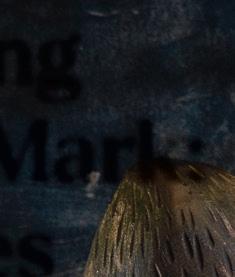




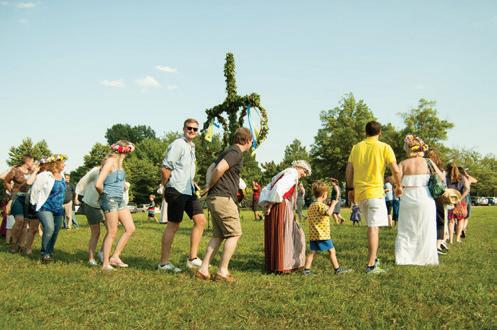


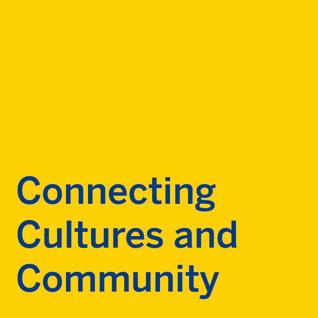


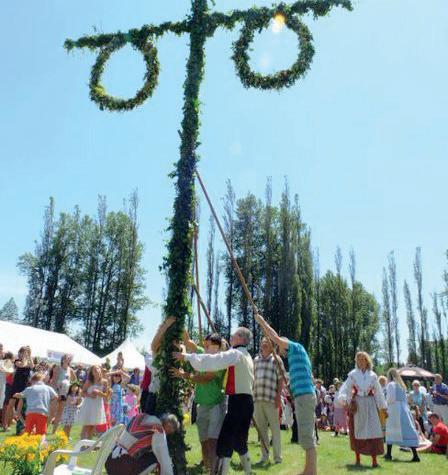
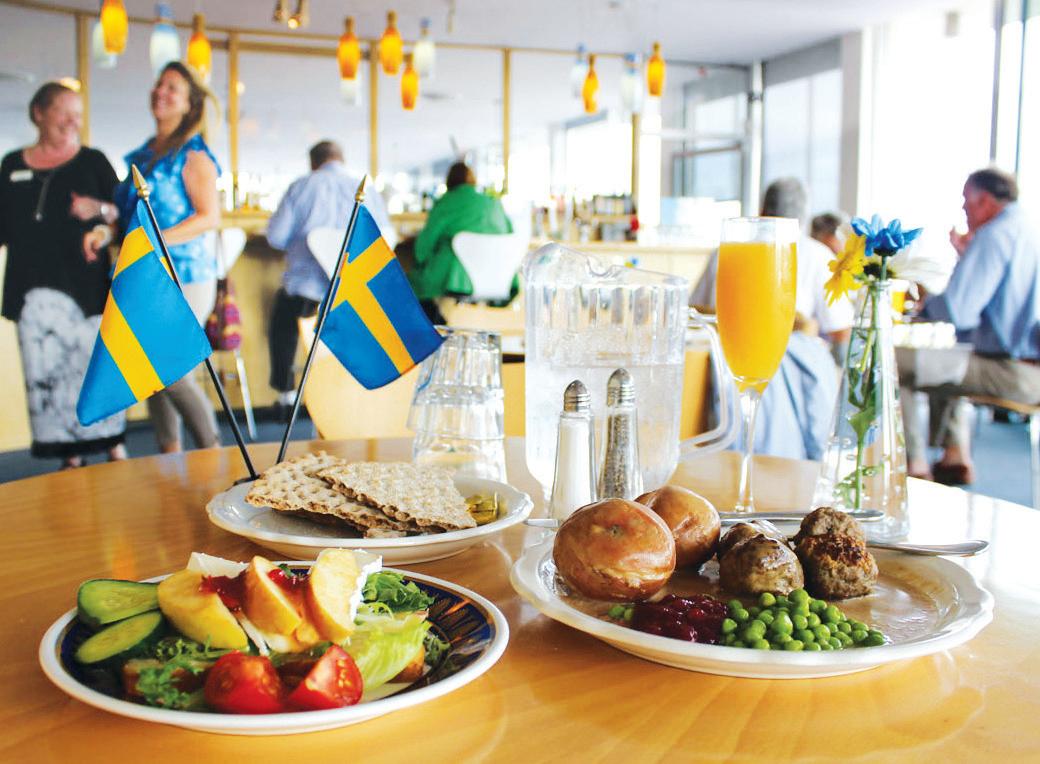
Swedish Press is the world’s leading magazine on all good things Swedish. An authority on design, business, culture and travel since 1929, Swedish Press delivers insightful news and commentary in a visually striking format. With a nod to the past, and a peek to the future, Swedish Press is your go-to source for updates and inspiration from Sweden.
SWEDISH PRESS (ISSN 0839-2323) is published
six times per year by Swedish Press Inc, 1801 Ford Street, Ogdensburg, NY 13669. Periodical postage paid at Ogdensburg, NY 13669 (No. USPS 005544).
US POSTMASTER: Send address changes to Swedish Press, PO Box 1568 Ogdensburg, NY 13669
OFFICE: 1-402 O’Connor Street, Ottawa, ON K2P 1W3, Canada
US MAILING ADDRESS: PO Box 1568 Ogdensburg, NY 13669
WEBSITE www.swedishpress.com

E-MAIL info@swedishpress.com
TOLL FREE +1 866 882 0088
PUBLISHER and EDITOR-IN-CHIEF
Kajsa Norman | Kajsa@swedishpress.com
ART DIRECTOR
Louise Rybring | webmaster@swedishpress.com
YOUTH EDITOR
Noelle Norman | noelle@swedishpress.com
REPRESENTATIVES
Calgary: Carin Pihl +1 403 931 0370
Edmonton: Ruth E. Sjoberg +1 780 237 6730
Thunder Bay: Elinor Barr +1 807 344 8355
Winnipeg: Craig Sidwall +1 204 391 7886
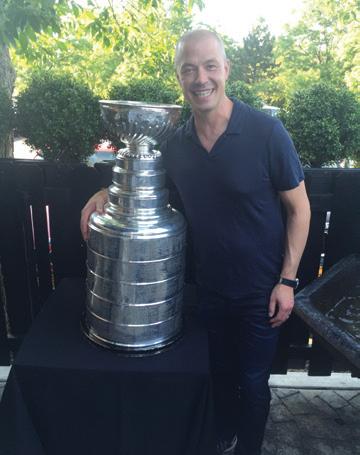
SUBSCRIPTION rates per year $59, 2 years $99, 1 year abroad $185. Digital edition $39. Subscribe Toll Free at 1 866 882 0088 or at www.swedishpress.com.
ADVERTISING Contact: info@swedishpress.com or 1 866 882 0088 for advertising rates.
SweMail TRANSLATIONS to English of the Swedish parts of Swedish Press are available free of charge every month. Visit http://biolson. atspace.cc/swemail/

© ALL RIGHTS RESERVED Reproduction in whole or in part without written consent of Swedish Press is strictly prohibited. Unsolicited material is welcome, but never the publisher’s responsibility. Enclose stamped self-addressed envelope for return. Statements and opinions expressed by the writers and claims in the advertising are their own and do not necessarily represent Swedish Press.
CANADIAN PUBLICATIONS MAIL AGREEMENT
No. 40010214 Return Undeliverable Canadian addresses to Swedish Press, 1-402 O'Connor Street, Ottawa, ON K2P 1W3 Canada.
NEXT ISSUE DEADLINE: JUNE 10, 2023 PRINTED IN CANADA
Cover image: 1) Ernst Larsson with his wife Florence and one of their 10 children on their fishing boat in the 1920s near Lund BC.
2) Pacific Great Eastern Railway, near Lillooet, 1930. Eric Axen is the second on the right side of the picture.
3) Logging camp, Hope, 1940. Eric Lowe worked in this camp. He was born close to Uddevalla and arrived in Silverhill in February 1911 together with parents and siblings.All photos courtesy of the Association for Swedish Heritage in BC.

om hur man skyddar vatten, ställer om produktion till cirkulär återanvändning, begränsar föroreningar och återställer skadade biologiska ekosystem. Även banker och andra finansföretag tvingas i sin kreditgivning se till att utlåning sker till industrier som uppfyller hårdare miljökrav. Konsulter och revisorer har genom detta fått en ny stor marknad för att hjälpa företagsledningar besvara mängder med frågor från EU-byråkratin.
Dessutom har den extrem betydelse för regioner med svag arbetsmarknad, Norrlands inland, samt stora delar av skogslänen ned till Dalälven. Vidare är en betydande del av den tunga transportnäringen beroende av skogsindustrin, liksom ett stort antal verkstadsföretag som tillverkar skogsmaskiner.
Svenska och finländska skogsindustrin känner sig obekväm med nya regler från EU under namnet ”taxonomin”, ett försök att minska utsläpp av koldioxid för att kunna klara Parisavtalet. I det ingår att EU åtagit sig att fram till år 2030 minska sina utsläpp av koldioxid CO2 med 55 procent från 1990 års nivå.
Att det just är Sverige och Finland som i ett internationellt perspektiv drabbas hårdast av de 27 EU-länderna genom de nya reglerna för skogsbruk beror på att de tillsammans med Kanada och USA har överlägset mest av den typ av skog som är bäst för produktionen i pappersindustrin och sågverk. På södra halvklotet dominerar lövskog och andra träslag som lämpar sig mindre väl för den tyngre skogsindustrin.
Ett annat och mer folkligt namn för taxonomin marknadsförs nu under namnet The European Green Deal.
Taxonomin infördes 2020 och skärps fortlöpande, t ex vid senaste årsskiftet infördes en omfattande rapporteringsplikt för större företag
I förarbeten till den nya EUlagstiftningen framgår att den svenska vattenkraften kan komma att behandlas hårdare än sol- och vindkraft. Kärnkraften likaså där Sverige inom EU är en betydande producent trots att 6 av de ursprungliga 12 kärnkraftaggregaten har stängts på fyra olika orter. Avsikten är att kärnkraften ska få egna och hårdare utsläppsregler trots att den är i stort sett fossilfri. Flera EU-länder planerar nu att investera i den nya kärnkrafttekniken SMR, små modulära reaktorer. Men de kommande strängare reglerna för kärnkraftens minimala utsläpp av koldioxid gör att de riskerar att inte få tillgång till statliga kreditgarantier på samma villkor som sol- och vindkraft. Olika arbetsgivar- och företagarorganisationer är mycket kritiska mot att EU på det sättet frångår den utlovade teknikneutraliteten.
Skogsindustrierna, den svenska branschorganisationen med 50 pappersmassa- och pappersbruk, 120 sågverk och 40 företag som huvudsakligen arbetar nära dessa, framhåller negativa effekter för hela samhällsekonomin om investeringarna bromsas. Näringen sysselsätter totalt 120 000 personer, cirka 2 procent av alla anställda i Sverige.
Branschen framhåller att den har högsta andelen av Sveriges nettoexport eftersom importdelen är mycket liten. Vidare svarar skogsindustrin för uppemot 12 procent av hela svenska industrins förädlingsvärde.
Den är en betydande maktfaktor som får den nya borgerliga svenska regeringen att i Bryssel hårt motsätta sig framtida ännu stramare villkor för skogsindustrin. Även socialdemokratiska politiker har slagit larm om effekterna, t ex att statliga Sveaskog, en av landets största skogsägare, kan tvingas minska avverkningarna särskilt i Norrbotten, vilket också kommer att drabba de förädlande skogsindustrierna. På ”skogsindustrierna.se” publiceras en rapport på engelska ”The forest carbon debt illusion” där branschens påverkan på klimatet diskuteras.
Summary in English: Balancing the economic and social benefits of forestry with environmental protection goals is at the center of the European Green Deal discussions in Brussels, pitting heavily forested countries like Finland and Sweden against the rest of the bloc. Industry representatives argue that the European Commission shouldn’t interfere with national forest management policies and that the suggestion to reduce forest harvesting for global climate reasons is counterproductive as much less carbon dioxide would then be removed from the atmosphere.

TBD
Brandon Benson
Astrid Marklund, Honorary Consul, Houston

Laura A Wideburg
Nina Kindblad
Elisabeth Drangel Sze
Olle Sander



Marianne Skarborn
Rick Ohlund
Stuart Mork
Anne Charlotte Harvey
Monica Hill
Karla Hayter
Kerstin Mayberry
Staffan & Inger Melin
Patricia Charlson
Thomas L. Martin
Garry Hammerback
In Memoriam
Kjerstin Lindstedt Dean
Thank you for your support!
One could argue that the first Scandinavians in Canada arrived at L’Anse aux Meadows with the Vikings in 1,000 A.D., at a time when national boundaries between the Nordic countries did not yet exist. L’Anse aux Meadows in Newfoundland is the only Norse settlement in North America which has been archaeologically verified. In 1968, it was named a National Historic Site by Parks Canada, and in 1978 UNESCO declared it a World Heritage Site. The findings proved once and for all that Norsemen had “discovered” North America five centuries before Christopher Columbus.
However, it wasn’t until centuries later, in the mid-1800s, that the great transAtlantic migration begun. Many Scandinavian immigrants arrived and settled in the United States and then travelled north to settle in Canada. A few arrived in Canada before it became a country in 1867, but the pace picked up after 1884, when the first Scandinavian immigration agent was appointed. In the 1920s, the United States introduced an immigration quota and Canada became the destination of choice for Icelanders, Finns, Norwegians, and Danes. Even Swedish immigrants from the states of Minnesota and North Dakota migrated to the Canadian Prairie provinces, seeking work and adventure.
Early immigrants were mostly young and poor, but the vast majority were literate. They came from an agricultural tradition, and the Lutheran religion had impressed upon them a strong Protestant work ethic. They settled wherever opportunities for jobs and land presented themselves. While statistics from the era are unreliable and incomplete, only 11 percent settled in Southern Ontario and eastwards, and British Columbia had, by far, the most Swedish-born nationals of all the Canadian provinces. This remained true in the decade that followed but in the 1920s through to the 1940s, more Swedes lived in the prairies. Winnipeg was considered the “Swedish capital of Canada” until the 1940s, when Vancouver took over the title. By the 1950s, British Columbia was once again the province with the most Swedes and it has remained an important hub for Scandinavians ever since.
In this issue, we will focus on the Nordic heritage of British Columbia, highlighting some of those early settlers and the lasting imprints they’ve made on both the landscape and the culture of the province. We’ll also meet with some prominent contemporaries who help keep the Scandinavian legacy alive and shape the future of British Columbia.
Trevlig läsning!
Kajsa

We need your support!
Please consider making a generous donation to help keep your publication, and Swedish heritage, alive. You’ll find a form on page 29 of the magazine. Tack!
On April 4, Finland was accepted into NATO. The following day, Finnish Prime Minister Sanna Marin surprised the world by announcing her resignation.
WhenSanna Marin took office at the end of 2019, she was 34 years old, Finland’s youngest ever prime minister, and the fourth-youngest state leader in the world.
Marin is highly popular both at home in Finland and abroad. However, in the Finnish parliamentary elections held on April 3, Marin’s Social Democratic Party garnered only 19.9 percent of the vote, narrowly losing to the National Coalition Party (20.8
percent) and the right-wing Finns Party (20.1 percent).





























As no party won a majority in the 200-seat body, National Coalition Party leader Petteri Orpo will be tasked with leading a new coalition government.
On April 5, Marin announced she will resign as the leader of her Social Democratic Party at the next party congress in the fall. Marin’s resignation came as surprise to many, as despite the defeat, support for her party had increased since Finland’s last election. At a press conference, she explained:
“These have been exceptionally difficult years and difficult times,” Marin said, “Now that the election result is like this, I consider that I have

the opportunity to open a new page in my own life.”

Marin successfully led Finland through the COVID-19 pandemic and into NATO, which Finland officially joined on April 4, becoming the 31st member of the security alliance and doubling the length of member states' borders with Russia.
While Marin has received much praise, her personal life was subjected to significant scrutiny with tabloids and detractors criticizing her for being “a party girl.” Marin admitted that the past few years had taken a toll on her personally and said she hoped to be able to live a “more peaceful life” in the future.
Marin will continue as a lawmaker in Parliament.
Majblomman is a pin in the shape of a flower sold by children aged 9-12 to raise money for child poverty in Sweden. According to tradition, Queen Silvia always buys the first Mayflower pin at noon on April 17. After that, children across the nation are free to start selling their pins.

Founded in 1907 by Beda Hallberg, the Majblomman charity has become a well-known Swedish institution. This year was the first when it was possible to buy mayflowers online, which has impacted sales tremendously. Twelveyear-old Murhaf Hamid from Glimåkra in southern Sweden broke all records when, by April 25, he had already sold mayflower pins for close to 3 million SEK after a social media post about his efforts had gone viral. Children selling the pins get to keep ten percent of the revenue, as well as bonuses and extra tips.
For more information go to astoriascanfest.com



“It’s like winning the lottery,” Murhaf told local news channel SVT Skåne, adding that he had only hoped to earn enough to go for pizza with his friends.
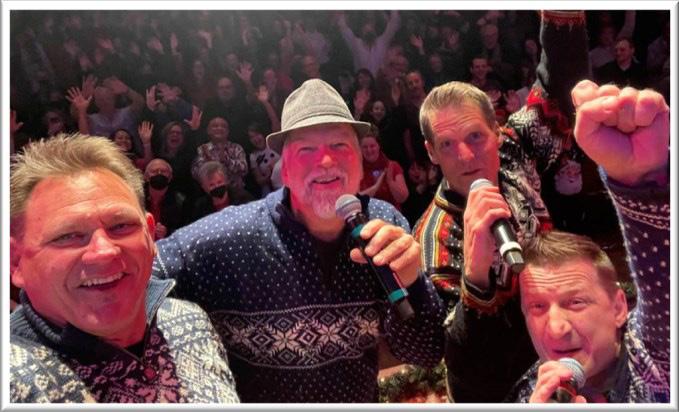
This summer, Sweden’s Ambassador to the United States, Karin Olofsdotter, bids us farewell. In conversation with SACC-USA, she shares her highlights and challenges from the past six years in the country.

Karin Olofsdotter started her career in the Foreign Service in 1994. Her first posting was in Moscow, followed by Brussels where she worked for the NATO delegation. In 2000, she was posted to the EU. From 2008 to 2011, Olofsdotter was the Deputy Ambassador at the Embassy of Sweden in Washington, DC. Despite her impressive career path, diplomacy was not on Olofsdotter’s radar when she first graduated from university.
“We had a huge economic crisis in Sweden so there were no jobs,” she recalls. “Therefore, I submitted an application to the Ministry for Foreign Affairs. I never ever thought I would get it, but to my big surprise I was called to the interview. I remember when they called me in the summer to say that I had an offer and I was thinking this is a joke, they will call back later saying it was another Karin who got the job. And to this day I still find this extraordinary.”
In the fall of 2011, Olofsdotter was posted to Budapest for her first ambassadorship. In 2014, she returned to Stockholm and worked there until asked to take up the post as Ambassador of Sweden to the United States in the spring of 2017. Now, she is on her sixth and last year of her second tour in the US.
“I have really loved it here and getting to know the American people. They are so welcoming and ready for discussion,” she says. “USA is the most important country in the world – it really is.”
Among the highlights of her time in the US are the efforts leading up to the US Senate’s vote on Sweden’s and Finland’s NATO applications.
“I met 50 senators out of 100 and did a lot of public outreach. In the end, 95 senators voted yes, and 3 of the remaining 5 were sick,” she says.
“Another highlight was the visit of former Swedish Prime Minister Magdalena Andersson and the Finnish President in May 2022 for their meeting with US President Joe Biden. And then, of course, being invited back to the White House this summer when President Biden
signed the NATO ratification documents.”
Naturally, there have also been challenges.
“The Russian invasion of Ukraine, the NATO application process, the January 6 US Capitol attack, and the aftermath of the murder of George Floyd have all been challenging moments. Also, the pandemic of course. We really had to change the way we worked rapidly, and started working remotely. Luckily, we had the US presidential election to focus on and kept ourselves busy.”
Olofsson enjoys learning new things and exploring new cultures.
“I really love that learning part and I love representing Sweden,” she concludes.
In August, she will become Sweden’s new Ambassador to Russia.
 By Michael Playfair
By Michael Playfair
Epiroc recently presented the world’s first underground mine truck made using fossil-free steel. Now, the company accelerates its journey to deliver the world’s greenest machines and create a more sustainable future.

As mining operations continue to adapt to a changing landscape, particularly with innovative technology related to zero emissions, equipment suppliers must ensure their products are keeping pace with the modern mine. This also means presenting solutions that work hand-in-hand with these new mining methods, from offering vital electrification infrastructure to supporting the adoption of digitalization and automation on site. For Epiroc, all of these elements combine to help boost productivity for their customers and the new underground machines they are introducing to the market have bolstered their efforts to accelerate this transformation.
One of these underground rigs, the Scooptram ST14 SG, is a fully battery electric loader with 14-tonne capacity built for highly demanding underground applications. The ability to work in tough conditions without exposure to diesel particulate or added ventilation requirements has proven to be an attractive combination for mining projects industry wide. The rig packs considerable power into its compact size and can lower energy consumption by up to 80% compared to a diesel machine. The battery regeneration capabilities of the Scooptram ST14 SG helps utilize energy efficiently and extends the
overall driving range as a result.
Servicing requirements for a machine is another important aspect taken into consideration by mining operations when choosing their fleets. This rig simplifies the process by reducing the number for service points and moving parts, which allows for longer service intervals and a lower running cost.
Despite the benefits of battery electric machines catching the attention of the industry at large, diesel rigs are still an important piece of the business and continuing to push innovation for diesel equipment remains essential to success. With this in mind, Epiroc has released their Minetruck MT65 S, an underground machine with 65-tonne load capacity built on knowledge garnered from the popular Minetruck MT6020 series.
The Minetruck MT65 S is ideal for haulage in larger underground mining environments and offers built in reliability with higher capacity and advanced ramp speeds – the combination leads to dramatically improved productivity. As a large truck moving through underground passageways, safety was an especially important consideration when developing this rig. The machine is equipped with a
variety of smart features, such as an automatic brake test, neutral brake apply and hill descend assist, which not only provides increased safety to the operation but also to the operator.
Although safety is paramount, increasing productivity is a driving force for mining projects and the Minetruck MT65 S delivers as needed without compromising on operator safety. The machine has the highest payload in its segment, which allows it to increase productivity while simultaneously lowering fuel consumption. It has an updated drivetrain that helps it reach new speeds going up the ramp as well as downhill – increasing the number of cycles per shift. With Epiroc’s telematics solutions feeding live data to mine management, as well as the machine’s Rig Control System (RCS), the rig is being used to its full potential every time.
Finally, with both battery rigs and diesel available for order, Epiroc gives miners a range of choices to suit their needs underground. As the transformation in the industry accelerates and zero emissions mining emerges as the standard, Epiroc’s battery conversion technology allows mines to make the switch on their own terms, as soon as they are ready!
Sedan några år tillbaka har jag förmånen att få göra det jag älskar, nämligen att föreläsa om svensk kultur för expats och talanger från alla världens hörn som har lockats till Sverige genom jobbkontrakt på svenska företag. Fokus på föreläsningarna är om vår unika svenska arbetskultur. De flesta upptäcker tidigt att vi svenskar älskar möten och att vårt fokus på konsensus till och med är starkare än det svenska järnet. En del av föreläsningen handlar dock om våra svenska traditioner där midsommar förstås ingår. För oss svenskar är ju midsommar den viktigaste och populäraste högtiden, men jag kan inte låta bli att rodna när midsommarstången kommer på tal.
Jag är inte den som normalt sätt är blyg, inte alls faktiskt. Men när det gäller just att presentera vår svenska midsommarstång, då hoppar jag gärna över den förklaringen om inte någon direkt frågar vad midsommarstången symboliserar. Kanske förvånar det inte någon att nio månader senare föds det som allra flest barn i vårt land (15 april är den vanligaste födelsedagen i Sverige) då denna högtid symboliserar fruktbarhet inte bara genom en framgångsrik skörd för bönderna utan tydligen för alla som firar midsommar i Sverige…
De senaste åren har jag haft glädjen att fira midsommar i Sveriges midsommardröm Smögen som ligger norr om Göteborg och inte så långt från norska gränsen, likt en liten ö för sig självt där fiskmåsarna

flyger längs alla klippor. Varje år hälsar vi på våra vänner som bor i ett av de tusentals vita trähusen med röda tegeltak som är så typiska för just Smögen. Traditionen att gemensamt klä midsommarstången och därefter dansa runt den, får folk från hela Smögen att samlas på ett och samma ställe. Unga som gamla är lika ivriga att dansa och emellanåt är vi “tre små gummor som ska till marknaden i Mora” och i nästa stund är vi “glada musikanter som spelar basfiol och flöjt”. När denna procedur är färdig väntar god mat i form av smörgåsbord, jordgubbar och kanske en och annan snaps med en dans – inte konstigt att vi älskar midsommar trots allt!
Det som gör Smögen så speciellt är att om man inte samlas vid midsommarstången så samlas man vid kända Smögenbryggan där båtar i alla prisklasser främst från svenska västkusten men också förvånansvärt
många båtar från Norge stoltserar med att ha lyckats få en plats vid bryggan. Att bara titta på alla glada ungdomar med midsommarkrans i håret (vissa har fått lite för mycket snaps i sig …) och känna glädje över att solen aldrig går ned gör midsommar – trots sin fallossymbol – till mångas favorithögtid. Ofta undrar jag dock om alla vet vad det är vi dansar runt när vi hoppar runt som små grodor omkring stången. Eller är det kanske just därför vi älskar midsommar?


Summary in English: Midsummer is a favorite tradition among many Swedes. As Svea celebrates with her family in beautiful Smögen, north of Gothenburg, she reflects on what the May Pole actually symbolizes. Perhaps it’s no coincidence that April 15, nine months after midsummer, is the most common birthday in Sweden.
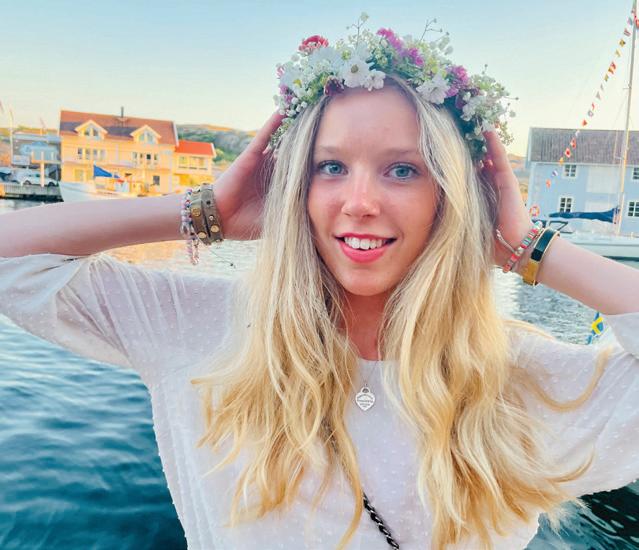
Footnote: Yvonne “Svea” Gossner är en f.d universitetsadjunkt och Swedish influencer, numera ägare av Learn Swedish Culture AB. www.learnswedishculture.com

There are many places in British Columbia with Nordic names and the history to match. Check out these highlights – all located in gorgeous surroundings.
box” to preserve his notes during the voyages. This protective case is sometimes still used today in libraries and archives. After his return to England Solander spent the rest of his life working at the British museum. He never returned to Sweden. Daniel Solander died in London in 1782.
However Captain James Cook went off on another expedition to find the Northwest Passage. This took him up the British Columbia coast and it was then that he named Solander Island after his friend Daniel Solander.

Gun Pennink
This small island and ecological reserve just off the Brooks peninsula on the west coast of Vancouver Island gets its name from a Swedish botanist.
Daniel Solander was born in Piteå in northern Sweden in 1733. He enrolled at Uppsala university in 1750 to study law but abandoned his studies after becoming inspired by botany professor Carl von Linneaus, the father of taxonomy (naming of plants). Daniel Solander mastered this new naming system and was sent to England in 1759 by Linneaus as an emissary. In England, Solander was appointed assistant librarian at the British Museum in 1762.
During this time he met a wealthy landowner, Joseph Banks, and through him was invited to join Captain James Cook's ship the “HMS Endeavour” on its first voyage in 1768. It was a circumnavigation that went to South America around Cape Horn to the South Pacific, New Zealand and Australia and on through SouthEast Asia and South Africa to England, returning in 1771.
During this voyage Solander and Banks collected over 30,000 specimens. Solander was meticulous in his work, categorizing the specimens they collected. He wrote notes that are now bound together and kept at the Natural History Museum in London.
He also invented the “Solander
Noelle Norman Sointula, Finnish for “place of harmony”, is a small community located on Malcolm Island in British Columbia. A group of Finnish settlers founded the village in 1901 after rowing north from Nanaimo looking to escape the hard mining life on Vancouver island. Hoping to construct a utopian socialist society, they wrote to Finnish journalist and visionary Matti Kurikka to lead the new community and raised funds to bring him to Canada.
Their dream was to live and work together in harmony and equality, free from the exploitation and oppression of capitalist societies. Believing that the remote location of Malcolm Island would provide them with the isolation they needed to build their utopia, they started a company that would run fish-
ing boats, harvest logs, farm and operate shops. They also began publishing a newspaper in Finnish called Aika which means “time.”
However, things did not go according to plan. The company didn’t charge enough for its work, so the colony ran out of money. In 1903, a devastating fire killed eleven people as well as a great deal of supplies, bringing the fledgling community to its knees.
Kurikka, who was a dreamer but not a great leader or businessperson, left and the community struggled to make a living. In the end, many of the settlers were forced to return to Finland or move to other parts of Canada, but a small group persevered.
In the 1920s, Sointula experienced a resurgence, as new settlers arrived from Finland, and new industries, such as logging and fishing, were developed. The community continued to grow and prosper, and by the 1930s, it had become a bustling town with a population of over 1,000 people.
However, the Great Depression and World War II hit the community hard, and many residents left in search of work and better opportunities. In
the decades that followed, the population of Sointula declined, and the community struggled to maintain its economy.
Today, Sointula is a small community of around 600 people, known for its picturesque location and natural beauty. The community still has strong ties to Finnish culture and heritage, and hosts an annual Finnish Heritage Festival, which is a popular event that attracts visitors from all over the region. The local bakery sells pulla (a Finnish pastry) and there are many saunas on the island.
Noelle Norman
this as an opportunity to start a new life in a new land, and they brought with them their customs, traditions, and culture. They established farms, fishing and logging camps and participated in the local economy.
The Scandinavian immigrants established their own churches and cultural societies, and they celebrated traditional festivals such as Christmas and Easter. They also helped to preserve their language and culture through the teaching of their native languages and the preservation of their folk traditions.
Today, Holberg is a small community of around 300 people. The Scandinavian heritage is still present in the community, and it is celebrated through events and festivals such as the annual Midsummer Festival.
The community is also known for its natural beauty, and it attracts many visitors who come to enjoy the rugged west coast of Vancouver Island.
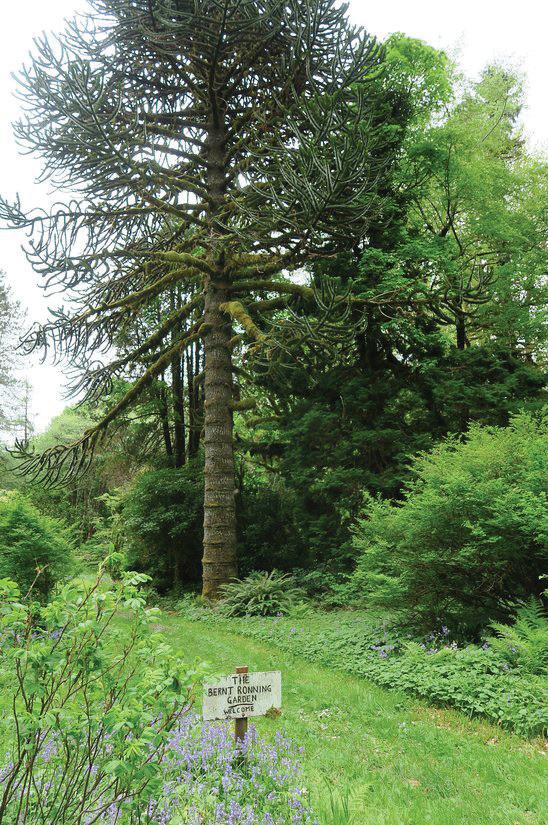
is a small community on the west coast of Vancouver Island, named after the Danish-Norwegian playwright Ludvig Holberg. The name was chosen in the early 1900s by the first settlers who were mostly of Danish descent.

In 1907, the Canadian government offered land to settlers on the west coast of Vancouver Island, and many people from all over the world took up the offer.
The Scandinavian settlers saw
The community of Sointula. Photo: Paul Hamilton/www.flickr.com World tallest Monkey Puzzle tree in Ronning Garden in Holberg. Photo: Tripadvisor.comLUND
Astrid Switzer
Lund, BC is the small picturesque seaside village on British Columbia’s Sunshine Coast on the northern terminus of Highway 101, 22 km north of Powell River. It was founded in 1889 by two brothers from the Valdemarsvik area, Charles and Fred Thulin.
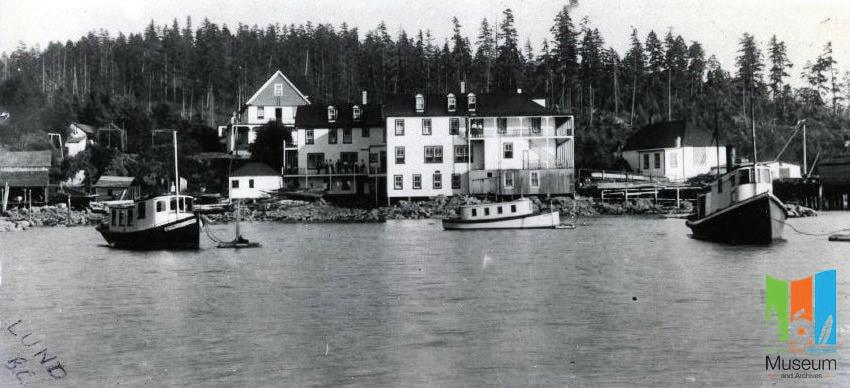
Charles Thulin (1863-1932), born Carl August Andersson and Fred Thulin, born Fredrik Gottfrid Andersson (1873-1935) grew up in a crofter’s holding in Tryserum parish, Östergötland County, but Charles’ adventurous spirit took him to Vancouver. His younger brother Fred followed three years later. They changed their name to Charles and Fred Thulin and finally settled on the Malaspina Peninsula where they founded the settlement of Lund.
In 1889, with money from his work on the Canadian Pacific railway and as a logger, Charles was able to buy a piece of land north of Vancouver. With hard work more or less day and night
the Thulin brothers created the site they called Lund after the southern Swedish city. It was in 1890 that the name was chosen because it was easy to remember and easy to spell.
The entrepreneurial brothers foresaw the need for services to the logging and fishing industries so they built a wharf, tugboats, large and smaller scows, a hotel in the centre of Lund that contained a store and a Post Office. They cleared and drained the meadows for farmland. Fred became the Post Master and Justice of the Peace in the community. Fred’s reason for coming to Canada was that he had heard they did not work in the rain there. He was known among the Scandinavians as ‘‘Poppa Thulin’’ for his willingness to aid the community and to assist people in financial difficulty.
The following is a story from John Kalervo Gröhn’s memories from the 1930s, courtesy of Dianne Kilback:
“One of the Thulin brothers supplied the loggers with drinks from the bar and marked the cost against their pay cheques. When their credit ran
out they were told to go back to logging. Many of the loggers complained that they were being taken but to no avail as Thulin was the law in Lund. One day the loggers got together and planned to play a trick on Thulin. The plan was to coil the fire hose on top of the bar in the hotel and one of the loggers was to turn on the water when Thulin came in the door. When this happened Thulin and the whole bar was a dripping shambles. Thulin did not take this lightly and he had the loggers thrown in the clink. The jail was underneath the hotel floor on the rocks next to the high tide line. As the loggers got used to the dim light there they noticed that Thulin’s liquor cellar was right next to the jail. They managed to get into the cellar without too much digging and consumed a large quantity of liquor before the break in was discovered. They had to go back to logging to pay the bill.’’
Fred Thulin remained in Lund for the rest of his life. Charles Thulin moved to Campbell River for more entrepreneurial projects.
In 1963, young nurse Laila Axén was hitchhiking to Katrineholm from her hometown of Ängsjömåla when a young chemical engineer named Arne stopped and offered her a ride. It was love at first sight. By June they were engaged and in November they were married. Shortly after Christmas, the couple moved to Nanaimo, British Columbia. Arne specialized in pulp and paper, so as new mills opened across British Columbia, they took the opportunity to move with their two sons Gustav and Johan. They lived in Kamloops and Gold River before finally settling in the Greater Vancouver area in 1974.
While Laila did become licensed as a nurse in Canada, she didn’t practice much, opting instead to pursue her passion for preserving Swedish culture and traditions in Canada.
“Swedishness has always been near to my heart,” she says. “I’ve always been interested in our roots; the Swedish culture and traditions – all the things one takes for granted when living in Sweden.”
She joined the Swedish Cultural Society in 1975 and has been involved in many Swedish associa-
Ingredients:
• Feature Foods Herring Fillets in Wine Marinade, 725 grams (Costco)
• 4 dl White Sugar
• Red Onion

• Fresh Dill
• Crushed White Pepper and Allspice
tions in Greater Vancouver. She is a former president of Sweden House and was instrumental in helping the Scandinavian Community Centre Society, SCCS, install a commercial kitchen.
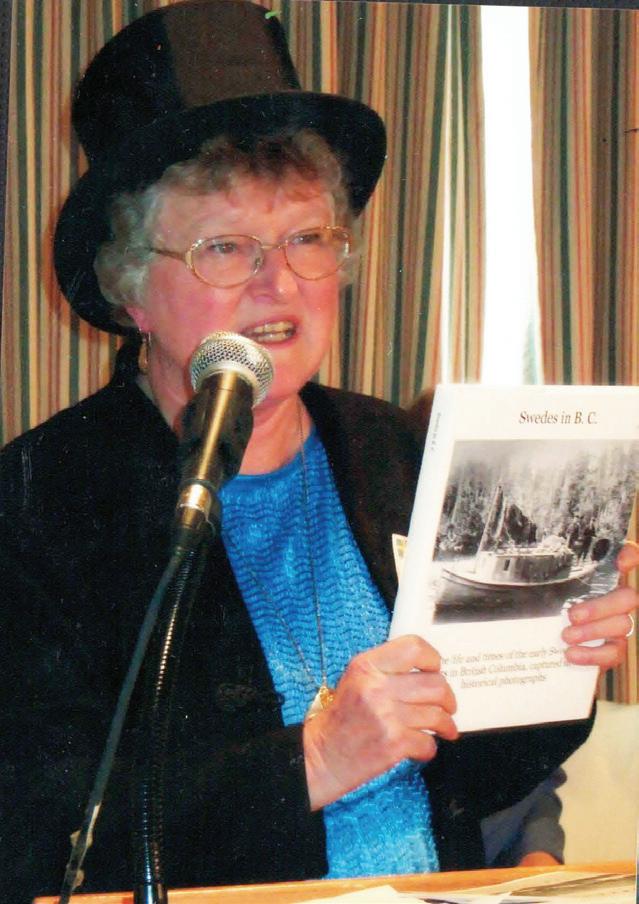
Over the years, Laila earned many awards for her work, most recently in 2022 when she received the Cultural Resource Accessibility Award from the British Columbia Historical Federation. When she turned 80 years old, Sweden House Society created a scholarship grant in her name which is awarded annually to a BC student who volunteers to promote Swedish culture in the province.
While Laila is passionate about all Swedish traditions, Swedish cuisine has a special place in her heart. Here she shares a herring recipe invented by the Swedish community in BC, which is as close to Swedish herring, or inlagd sill, as one can get. Why not give it a try this Midsummer?
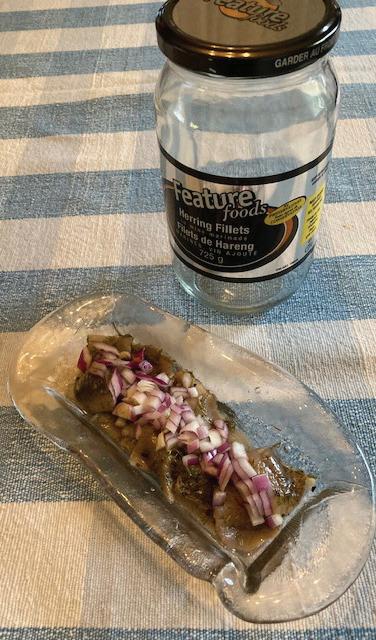
Preparations:
Pour the contents of the jar of herring fillets in a big sieve over a pot to collect the marinade. Remove the old onion from the pieces of herring.
Add 4 dl white sugar to the marinade. Let come to a boil. Let cool.
Put a bay leaf in bottom of glass jar. Layer: Chopped red onion, herring pieces, crushed white pepper and Allspice, chopped fresh dill, red onion, herring pieces, and so forth. Place another bay leaf in the middle of the jar. When new marinade has cooled, pour into jar and over content. Keep in fridge!
Laila Axén giving a speech. Photo: Private Swedish Herring à la Laila. Photo: PrivateIf you’ve had any contact with the Swedish community in Vancouver, odds are you’ve met Carina Spencer. Active on virtually every Swedish board and committee on the Canadian West Coast, she is also Sweden’s new Honorary Consul in Vancouver.
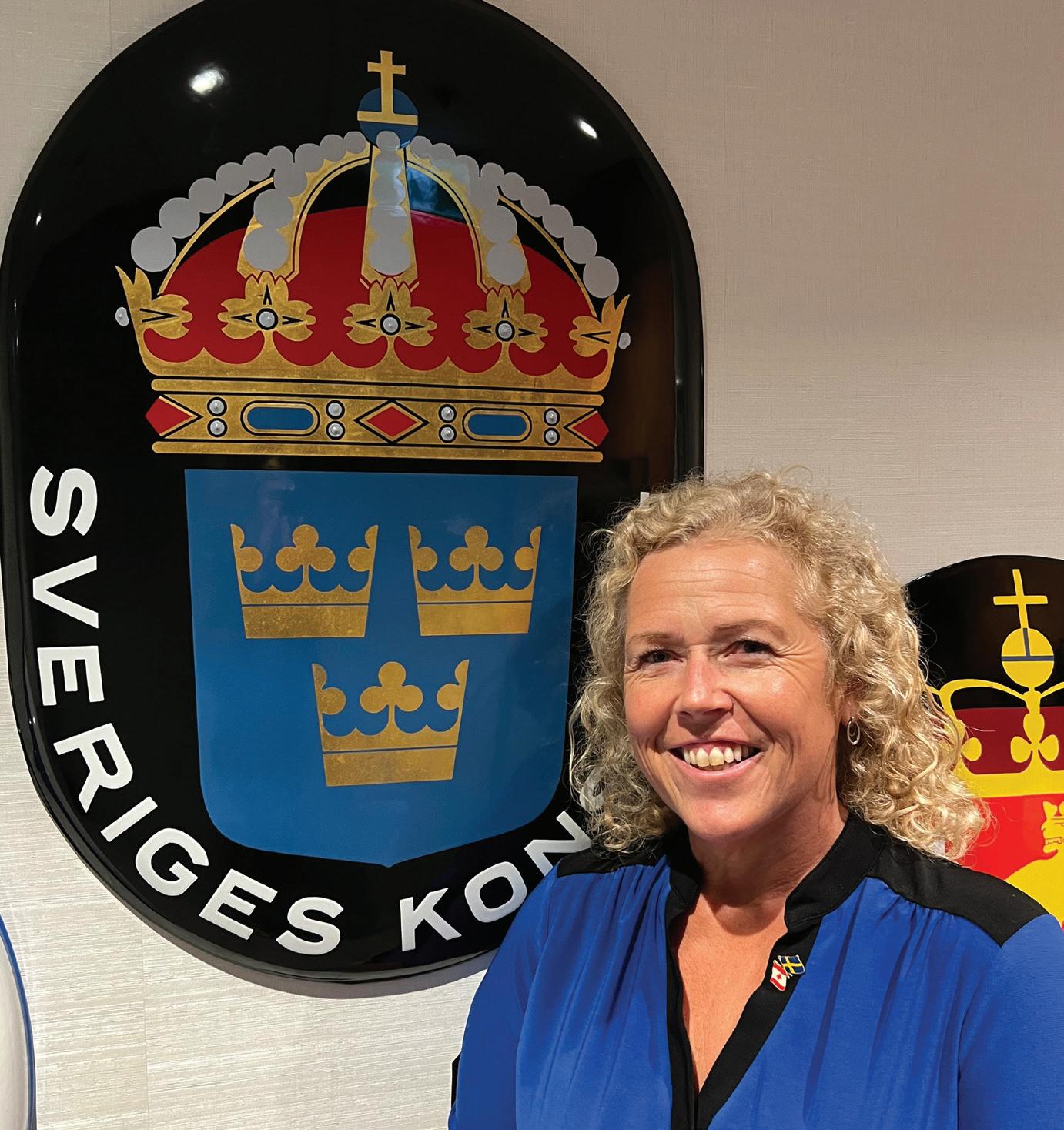 By Kajsa Norman
By Kajsa Norman
Born in 1966, Carina grew up in Figeholm, a small-town in Småland. She dreamed of becoming an architect, but her innate longing to discover the world took her down a different path. After graduating from high school, she spent a year working on a kibbutz in Israel – first in the occupied areas in the north, and then in the West Bank.
She returned to Sweden in 1986 intending to go to university but saw a help wanted ad for a Swedish nanny in Vancouver and left for Canada instead.
A few months later she met her future husband, Doug Spencer, a football player at UBC. When her year as a nanny was up, the two of them left to backpack through Europe.
“Doug had never been to Europe, and it was wonderful to travel with someone who was seeing everything for the first time. I’ll never forget how excited he was the first time he saw rune stones in Sweden. There are so many things that those of us who have grown up there take for granted,” says Carina.
The couple returned to Canada where Carina studied tourism and worked as a travel agent while Doug finished his university studies. In 1990, they married and moved to Sweden.
“I had made it clear to Doug that it was important for me that he learned Swedish so that our children would be Swedish-speaking,” says Carina.
Doug spent a year-and-a-half
learning the language while working in Figeholm.
“When he was out walking his second day in town, locals were already greeting him with Hej Doug! He didn’t know who anybody was, but my family has lived in Figeholm for generations so the whole town knew that I had brought back a Canadian,” she laughs.
The couple returned to Canada in 1992 when Carina was three months pregnant. Their first son Joshua was
born later that year. Shortly thereafter they acquired a food brokerage business and spent the following 25 years representing big food companies, selling their products to restaurants, airlines, ferries, and schools.
“We grew from five employees to 35 and established a presence all over Canada,” says Carina.
In 2019, they sold the business to retire, luckily just before the start of the pandemic. That said, retirement
didn’t turn out as expected. Carina was offered the position as Honorary Consul and felt it was an honor she couldn’t turn down. Having spent the past 20 years in key volunteer roles within the Swedish community, becoming consul felt like a natural culmination.
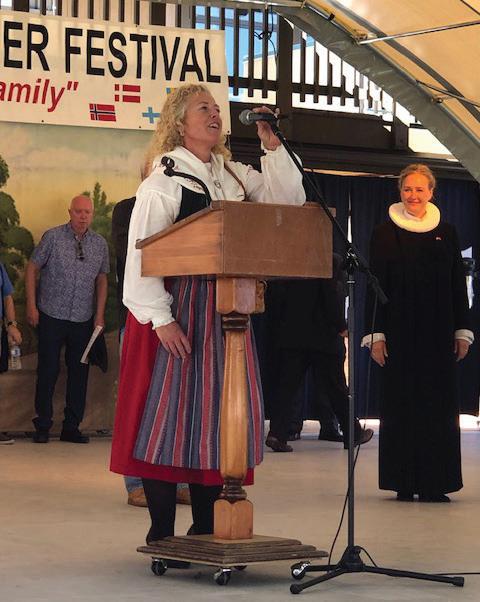

“At the age of 55, I had to sit down and put together my first ever CV,” she laughs. “I had started working at the age of 12 at fast food chain Sibylla and grew up in a town where everybody knew everybody else, so before we started our own business, I had gotten all my jobs through contacts.”
Carina first became active in Svenska kulturföreningen (SKF) when her two sons Joshua and Mathias took Swedish classes there in the 1990s. In the 2000s, she added board and leadership roles at Sweden House, Scandinavian Centre, Swedish Heritage in BC and the Swedish-Canadian Rest Home Association.
After some 20 years in Canada, Carina finally applied for citizenship in 2014.
“For the longest time I didn’t
want to. I love Canada and think it’s a fantastic country to live in, but my soul is still yellow and blue. I didn’t leave my home country because I had to as so many others who come here. I go back ’home’ to Sweden as often as I can.”
Carina loves doing her part to promote Sweden.
“You don’t have to be loud and proud –you can be not so loud but proud,” she laughs. “We are such an innovative nation with so many inventions for a country of a mere 10 million inhabitants.”
Honorary Consul is a 4-year appointment and Carina will be responsible for British Columbia and Yukon. While her most important responsibility is helping Swedes in distress, what most excites her is meeting new people and deepening the collaboration with other international consulates and Canada. She would also love to ease the administrative burden for Swedes living on the West Coast. While the consulate in Vancouver can issue emergency passports, the embassy in Ottawa is still the only place
in Canada where Swedes can apply for regular passports.
“People don’t understand how incredibly large this country is. Yes, Sweden has an embassy in Ottawa, but for us on the West Coast the distance to go renew our passports is the equivalent of flying from Sweden to Africa.”
To emphasize her point, Carina explains that during the COVID pandemic some Swedes were stranded.
“They were unable to renew their Swedish passports because they weren’t allowed to travel and by the time travel was allowed, their passports had expired, and it was hard to get appointments in Ottawa because of the COVID backlog. My biggest wish for us Swedes out west is to be able to renew our passports in Vancouver once a year or every second year by having a mobile passport station like we used to.”
In 2023, Sweden will also open a Consulate General in San Francisco which should make it easier for Swedes in western Canada to renew their passports.
Carina’s oldest son, Joshua, recently moved to Sweden. He was married there in 2022 and now lives in Solna.“It’s wonderful. I feel as though a part of me has returned home again,” says Carina.Carry a woman through an obstacle course and win her weight in beer! There’s no need to travel to Finland to practice the ancient sport of wife-carrying. Every year, the Scandinavian Center in British Columbia hosts this hilarious competition where size truly matters.
 By Kajsa Norman
By Kajsa Norman
Wife carrying (eukonkanto in Finnish or kärringkånk in Swedish) is a Finnish contest in which male competitors race through an obstacle course while carrying a woman, who may or may not be their partner. Some claim the tradition dates to the late 1800s when a man named Herkko Rosvo-Ronkainen, better known as Ronkainen the Robber, would roam the forests with his gang of thieves stealing food and abducting women from nearby villages, supposedly carrying them on their backs as they ran away. Others mention a more generic practice of “wife stealing” among young Finnish men in the olden days. If the woman one wanted
was already taken, she would have to be stolen away. No matter its origins, eukonkanto was first introduced as an official sport at Sonkajärvi, Finland. Since 1992, the annual Wife Carrying World Championships have been held there. First prize is the “wife's” weight in beer.
The International Wife Carrying Competition rules stipulate that: “The wife to be carried may be your own, or the neighbour's, or you may have found her further afield; she must, however, be over 17 years of age.” The minimum weight of the wife is 49 kilograms. A wife lighter than that will have to wear a backpack with additional weight such that the total load is 49 kg. There are several types of car-
rying techniques allowed: the classic piggyback, the fireman's carry (over the shoulder), or Estonian style (wife upside-down on his back with her legs over the neck and shoulders).
Inspired by this tradition, FinnishCanadian Karina Linder, President of the Vancouver-Finlandia club, suggested that Finns in British Columbia should incorporate the sport into the annual Scandinavian Midsummer Festival in Burnaby. That was 12 years ago, and the event quickly developed into a crowd favorite.
“’Husband’ and ‘wife’ are the entries, but we always put them in quotations because you don’t have to be married. You don’t even have to know each other as long as you’re will-
ing to carry or be carried through the course,” says Karina.
David Moulton, emcee for the event, points out that the Canadian version has no gender bias.
“You can be same sex as long as you identify somebody as ‘the husband’ and somebody as ‘the wife’, that’s all that’s required,” he says.
The Canadian age limit also differs from the Finnish one. You have to be 18 and up to enter, and of legal drinking age – which is 19 in British Columbia - to take the beer home.
Karina and her Swedish husband Daniel participate every year. They have even competed in the World Championships in Finland, which features a permanent, more advanced course.
“It has a waist-deep water hazard, an uphill and a switchback,” says Karina. “We do the Estonian carry technique, an upside-down piggyback which allows me to wrap my arms around his torso, making it easier to hold on. But it is a little bit intimidating when you can’t see where you’re going. You don’t know what’s going on or how much you have left. You have to have a fair amount of trust in your partner – and wear a helmet!”
While there are some who take it very seriously, it is also possible to show up and register for the World Championship upon arrival. While the race itself is short, the event is part of a festival which lasts a full weekend.
“There were about 40 teams in our category. It took us 1 min and 40 seconds to complete the course, while the winners did it in about 40 seconds,” says Daniel.
In Burnaby, it is he who sets the course, and it varies each year so that previous competitors don’t have an advantage. Some years it’s a longer
sprinting course, while other years it might be a shorter but more technical course. It does, however, always feature a water hazard of some kind, typically an inflatable pool that the competitors will have to splash through, an obstacle they will need to step over, as well as a turnaround point or loop to go through.
“One year it was raining a lot and a bus got stuck on the field, so we had to work it into the course,” Karina laughs.
Volunteers dressed up as trolls demonstrate how the course should be completed, usually eliciting a few good laughs from the crowd.
“The falls are the crowd favorites, especially when they occur in water or when the partner gets dropped and is scrambling to get back on. We’ve had a penalty for falling in the past but realized over time that if you make that mistake, you’re not going to win anyway since it is all about speed. A couple of times, people who were struggling have switched partners halfway through the race just to be able to finish,” says Karina.
“It’s a weight thing. It’s tough when someone is a bit heavier, but if they’re too light that’s no good either as you’re not going to win that much beer,” says Pauli Juoksu, President of Finland House, and a regular competitor.
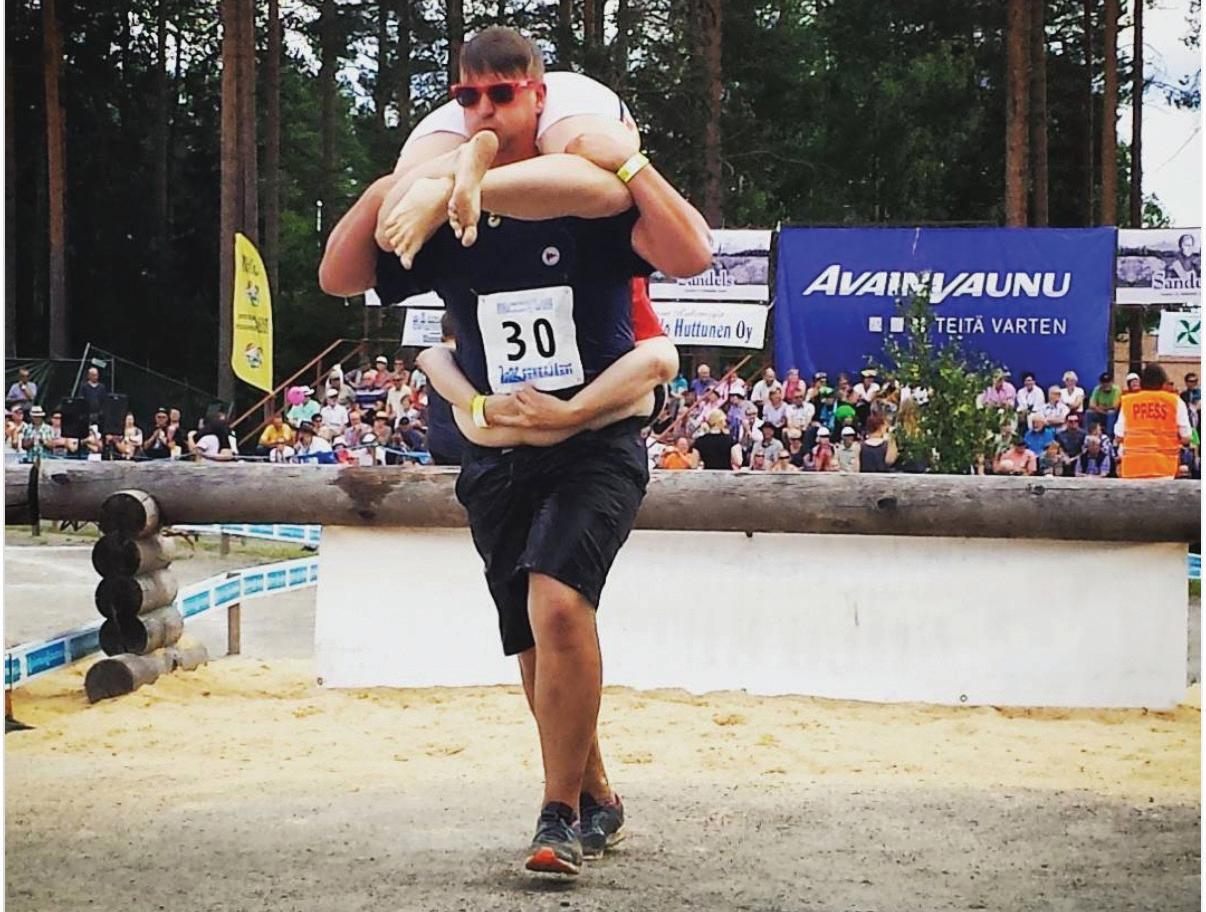
During the COVID-19 pandemic, the organizers encouraged people to film themselves carrying out the race at home on a DIY course. While he didn’t win, Pauli became a COVID crowd favorite when he submitted a video of himself racing with an inflatable doll.
“It had to be COVID compliant,
so I couldn’t find a real wife. I used a modified Estonian carrying technique since she couldn’t hold on,” Pauli laughs.
He is adamant that the Estonian position is the fastest since the carrier is the free to use their arms to run.
“The piggyback is the slowest. When you see someone doing the piggyback you know right away it’s their first time because the runner can’t use their arms,” he says.
Personally, Pauli prefers the fireman’s carry.
“I usually do that one because it’s easiest on the partner and I don’t have a regular partner. The person I carried last year didn’t like the Estonian position; it gave her a headache. We hadn’t had time to practice. Karina had arranged the wife for me, and I only met her at the starting line.”
About 20 teams compete each year at the Scandinavian Centre in Burnaby, BC. While it is possible to sign-up on the day, the organizers recommend those interested in participating to register in advance as there is a limit of 25 teams. The cost is $20 per team and includes free entry to the Scandinavian Midsummer Festival. This year’s wife-carrying race will take place on Sunday, June 25. To learn more or to register, visit https://scandinavianmidsummerfestival.com/
 By Kajsa Norman
By Kajsa Norman
When he first moved to Vancouver in early 2022, Patrik Allvin knew that Canadians loved their hockey, but he didn’t realize just how much.
“It didn’t take long before people started to recognize me around town,” he says. “The Canucks fans are so passionate. Hockey just means so much and it’s incredible to be able to be a part of that.”
Growing up in Leksand, Allvin’s life revolved around hockey from an early age.
“There wasn’t much else to do,” he laughs. “I was five or six years old when I started playing.”
While he never made the NHL, in the mid-90s, Allvin did come over to North America to play two seasons in the semi-pro leagues. He played for Nashville Knights and Florida-based Pensacola Ice Pilots in the East Coast Hockey League (ECHL), as well as for the Atlanta Knights and Quebec Rafales in the now dissolved International Hockey League (IHL).
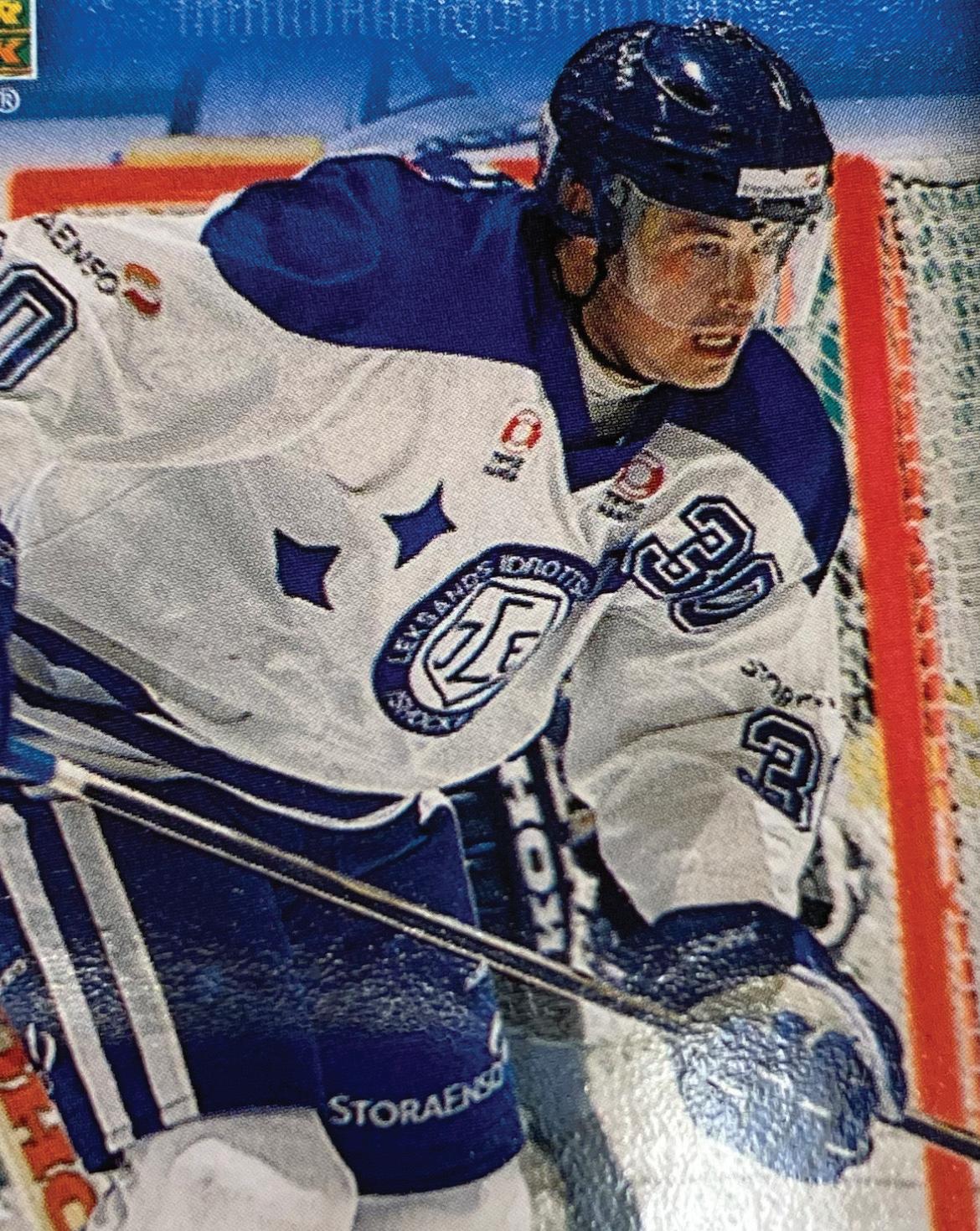
“It was a great experience to head to North America and learn how to
look after myself,” says Allvin who was 20 years old when he left Leksand.
“The year with Pensacola was incredible. The arena held 8,000 spectators and was sold out for each game. We had a great team and lived right on the beach,” he recalls.
That said, it wasn’t all sunshine. “Back then the lower leagues could be quite rough and not very accepting of European players. You were constantly tested physically. You had to learn to stand up for yourself,” he says.
Allvin participated in his share of fights and has described himself as a
dirty player.
“I didn’t have great skills, so I had to contribute other things,” he says. “There was definitely more fighting back then and I did some things I wish I hadn’t, but in the heat of the moment it was all about winning.”
Allvin quickly earned the respect of his teammates, and the experience certainly toughened him up. During his first year back in Sweden’s Division 1 league, he registered 139 penalty minutes in 28 games, more than any other defenceman in the league.
While the rest of his career was mainly spent in Sweden, Allvin also played five months in Norway’s top hockey league for Sparta Sarpsborg. At the age of 28, a knee injury put an end to his time as a player. His hockey career, however, was just beginning.
He was soon hired as a European scout for the Montreal Canadiens, and later as Head European scout for the Pittsburgh Penguins, with whom he won three Stanley Cups.
In 2017, he was named director of amateur scouting in North America for the Penguins. This time, moving back to the US from Sweden, he brought along his wife Marie and their children Agnes and Adam.
Marie is a midwife, and professor of Global Reproductive Health at Karolinska Institutet and Dalarna University. She and Patrik went to the same daycare in Leksand and have been a couple since their teenage years. Marie always supported Patrik in his worldwide hockey pursuits. Still, when his former boss in Pittsburg asked him to join him in Vancouver and become the first Swedish GM in the history of the NHL, he hesitated.
“I was a little Swedish I suppose, but a good friend of mine who is GM in the league encouraged me to take
the leap and I am very proud and grateful for the opportunity.”
The move worked out well – the family is thoroughly enjoying living in Vancouver. The Sedin twins, who work for the Canucks as special advisors, also helped the Allvin family get settled in Vancouver. 14-year-old Adam plays hockey and 16-year-old Agnes recently picked up competitive skiing. Both have their hearts set on staying in North America for university.
While Allvin works seven days a week, he strives to delegate and exercise as much as possible to ensure he has the energy to put in the long hours the job demands.
“And I don’t read the newspapers,” he laughs.
When the Swedish Press catches up with Allvin at the Rogers Arena, the Vancouver Canucks have just secured their first victory under new coach Rick Tocchet. The media has closely reported on every step of the staff changing process and Allvin’s face has become familiar to hockey fans across the continent.
While he isn’t one to shy away from the cameras, Allvin wasn’t prepared for just how much media focus there would be on him as a person.
“It’s a team effort, but at the end of the day, as General Manager I am responsible for the team and their performance – players and staff.”
And while his heart is set on winning a Stanley Cup with the Canucks, Allvin recognizes that change takes time.
“I focus on processes and care less about the short-term wins and losses,” he says.
His vision is to rejuvenate the organization through finding young talent that they can help develop.
The Canucks are currently one of
the youngest teams in the NHL and when we meet, Allvin is opting out of attending the upcoming Canucks game in Seattle in favor of watching some local young prospects play. It is obvious he still enjoys the scouting part of the job.
“Watching these 17-year-olds, you have to try to project what they will be like at 22 or 23. They will all be big and strong by then, so it’s more about trying to discern who has better skills, sense of the game, drive, and passion,” he says.
Last summer, the ice was packed with young Swedish players participating in the Canucks development camp, and Canadian media joked that perhaps the camp should be held in Sweden next time.
Allvin claims this was purely circumstantial and that there is no conscious effort to recruit Swedes.
“Regardless of country or region, we focus on the best players,” he says. That said, the Vancouver Canucks have certainly seen their fair share of Swedish players over the years.
“Daniel and Henrik [Sedin] told me they had seven Swedish teammates at one point,” says Allvin “The history of good Swedish players over the years has certainly made my job easier as there was already a great deal of respect for Swedes in the organization.”
Currently, there are only two Swedish players on the team: Elias Pettersson from Sundsvall and Oliver Ekman-Larsson from Karlskrona, plus another three in the Canucks’ minor-league team in Abbotsford. Is there a future Swedish hockey legend among them?
“They definitely have great potential, and it will be up to us to help them reach it,” Allvin concludes.
The Vancouver Canucks love their Swedes. Four of the top 10 scorers in franchise history are Swedes, as are three of the six players to have their jersey retired by the team. Here are some of the players who’ve stood out over the years.
By Kajsa Normanleft Vancouver with 550 points in 613 games, the most for a centerman in the team’s history at that time. He ranks sixth in all-time points for the Canucks.
Gradin later served as Associated Head Scout and was instrumental in the Canucks drafting great Swedish players such as the Sedin twins, Alexander Edler and Elias Pettersson. He became the third member of the Canucks’ Ring of Honour in 2011.
Born in Piteå in 1952, Lindgren joined the Canucks as a defenseman in 1978, after having played for Modo Hockey in Sweden. He played six seasons with the Canucks.
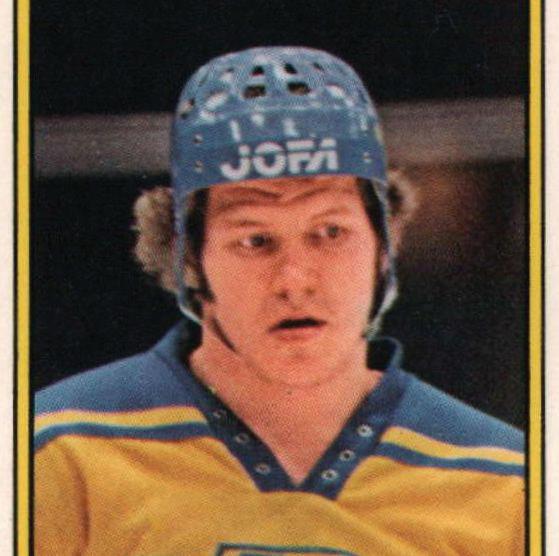
Born in Sollefteå in 1956, Thomas Gradin was the first great Swede in Canucks history. First drafted by the Chicago Blackhawks in 1976, the Canucks acquired Gradin in June 1978. He scored over 20 goals in 7 of his 8 seasons in Vancouver, including three 30-goal seasons. Gradin


Born in Skellefteå in 1961, Patrik Sundström was drafted by the Canucks in 1980 and played five seasons with the team. The second Swedish player to dominate as a Canuck, he replaced Gradin as the top offensive player. In 1984, he registered six assists and one goal in a single game, a record that he still holds.
Born in Bromma in 1971, hockey legend Mats Sundin ended his long and successful career in the NHL with the Vancouver Canucks.
Sundin made his Canucks debut on 7 January 2009, in a 4–2 victory over the Edmonton Oilers. On 21 February, Sundin returned to Toronto to play his first game against his former team the Maple Leafs. The return became highly emotional when a video tribute was played for the Leafs' franchise leader during a break in the first period followed by a standing ovation. The game was decided by a shootout with Sundin scoring the winning goal resulting in a 3–2 win for Vancouver.
Markus
Born in Örnsköldsvik in 1973, Markus Näslund played 12 seasons with the Vancouver Canucks, serving as team captain for 8 seasons. He is the franchise's all-time leader in power-play goals and was a three-time All-Star. He ended his time with the Canucks by having his jersey retired.

Born in Piteå in 1976, Mattias Öhlund played 11 seasons (1997-2008) with the Canucks. He ended his career with the most points by a defenseman in franchise history, a record that would later be passed by fellow Swede Alex Edler. The Canucks added him to the team’s Ring of Honour to celebrate his great career.
Born in 1976 in Mariefred, in 2008, Samuelsson won the Stanley Cup with the Detroit Red wings. The following year, he signed with the Vancouver Canucks where he enjoyed the two most successful individual seasons of his career, recording back-to-back 50-point campaigns in 2009–10 and 2010–11.
Internationally, Samuelsson is a member of the Triple Gold Club, having won the Stanley Cup, as well as gold medals with the Swedish national team at the 2006 Winter Olympics and 2006 World Championships.
Born in Örnsköldsvik in 1980, the Sedin twins played 17 seasons (20002018) with the Vancouver Canucks and became known as two of the best players in the history of the team.

Henrik served as captain from
2010 until his retirement and earned the Canucks’ all-time record for points (1,070) with Daniel close behind (1,041). Although Henrik accumulated more points and more assists than his brother, Daniel scored 154 more goals than Henrik, (393 in total) Henrik is the only Canuck to win the Hart Memorial Trophy and both are the only Canuck players to win the Art Ross Trophy. The Sedin twins represented their country at the Olympics in 2006, 2010 and 2014, winning gold with Sweden in Turin, Italy in 2006. The Canucks retired both their numbers during the 2019-20 season.
Born in Tampere, Finland in 1966. After beginning his career in Finland, Lumme moved to North America to join the Montreal Canadiens in 1988. In his second NHL season, he was traded to the Vancouver Canucks, with whom he spent the majority of his career and enjoyed the most success. Over nine seasons with the Canucks, Lumme was named the club's annual top defenceman on four occasions, became the team's all-time top goaland point-scoring defenceman, (later surpassed by Mattias Öhlund) and was a part of the squad's run to the 1994 Stanley Cup Finals where they were defeated by the New York Rangers.
Born in Turku, Finland in 1974, Sami Salo played as defenseman for the Canucks for nearly a decade between 2002 and 2012.

Born in 1986 in Rødovre, a suburb of Copenhagen. In 2006, Hansen joined the Canucks' minor league affiliate, the Manitoba Moose of the American Hockey League (AHL). Later that season, he was called up by the Vancouver Canucks and became the first Danish citizen to play and register a point in an NHL playoff game.
Born in Östersund in 1986, Alexander Edler has played 13 seasons (20062022) with the Vancouver Canucks. Edler is regarded as one of the Canucks’ best defencemen of all-time, holding franchise records for most goals, assists, and points scored.
Born in Herning, Denmark in 1993, Jensen made his NHL debut with Vancouver in 2013 and appeared in 24 games for the Canucks over three seasons, spending most of his time with the team's AHL affiliates, the Chicago Wolves and Utica Comets, before being traded to the New York Rangers in 2016.
 Photo: Orlandkurtenbach
Photo: Leech44
Photo: Orlandkurtenbach
Photo: Leech44
BeforeCanada became a country in 1867 there were Swedes living in British Columbia. At the turn of the century, BC had the most Swedishborn nationals of all the Canadian provinces. They settled wherever opportunities for jobs and land presented themselves. Like other immigrants, they were expected to conform to the language and customs of the Englishspeaking majority. Many suppressed their Swedish identity and assimilated so well that they became known as “the invisible immigrants”.
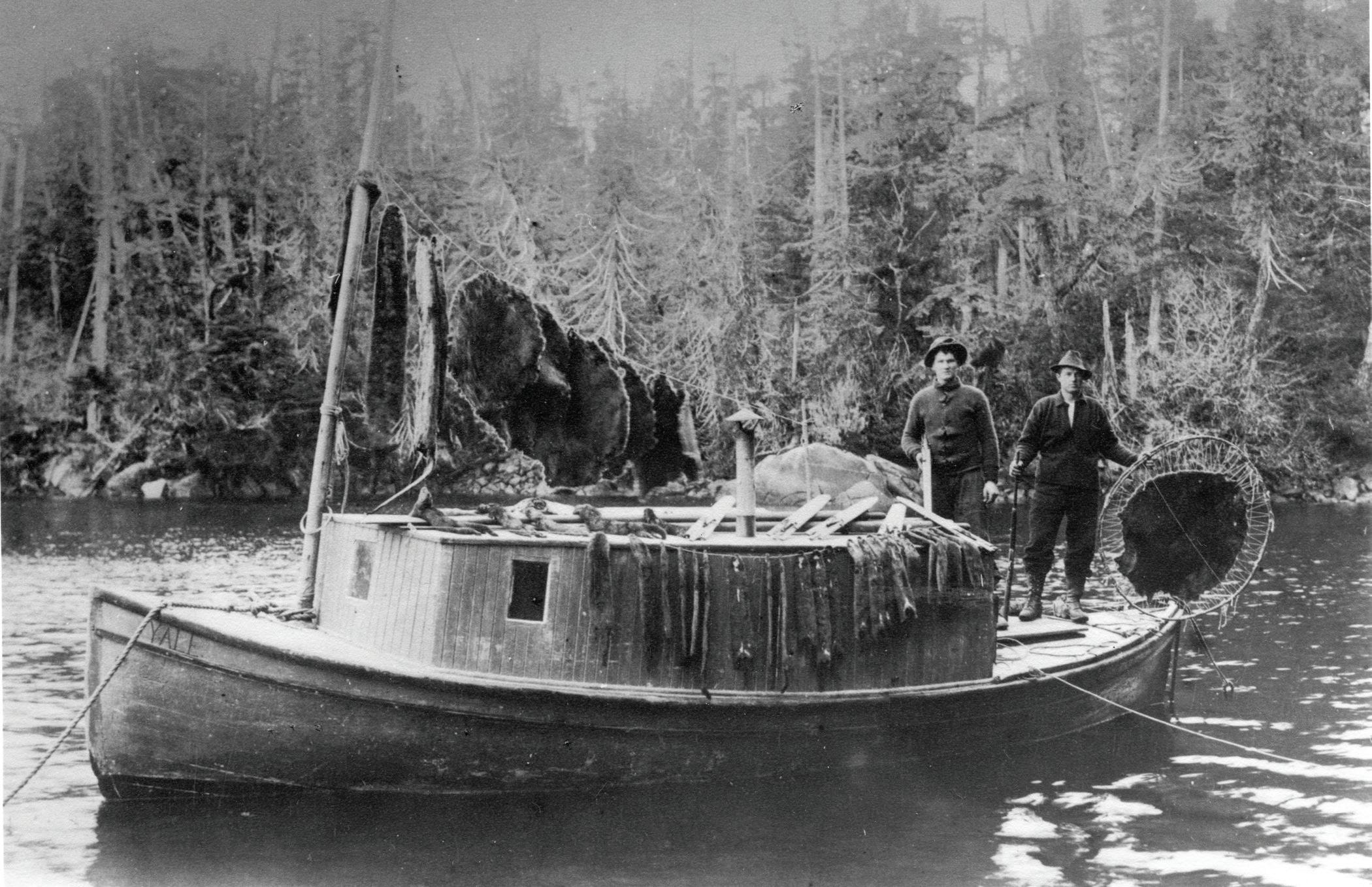
Not much is known about them, but these photos, from the “Swedes in BC” photographic exhibition (and book), offer a rare glimpse into the lives of some of these early Swedish settlers. All photos are published with the permission of the Association for Swedish Heritage in BC.
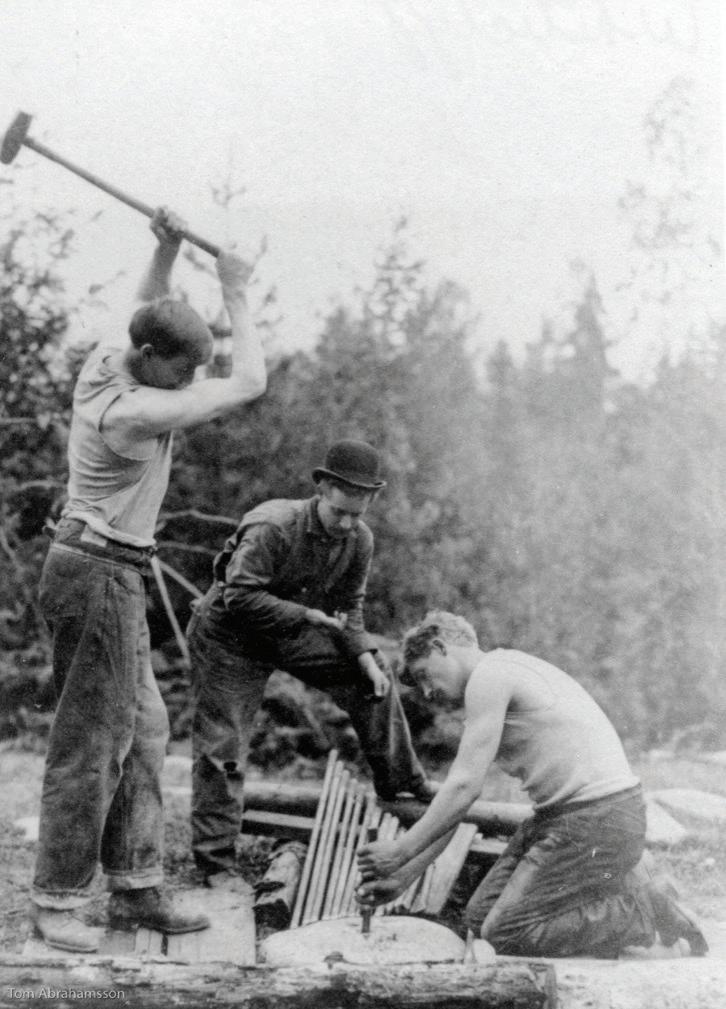
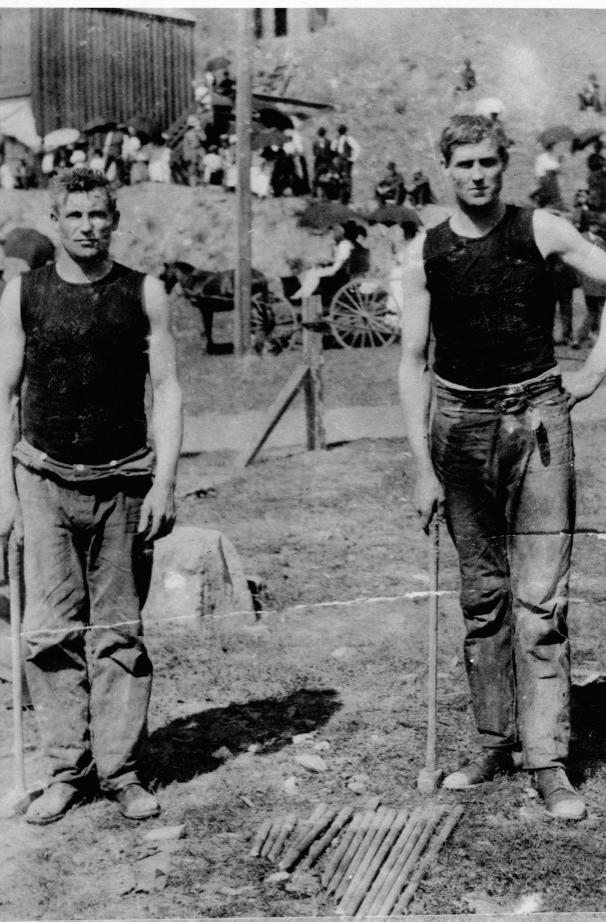
Solomon Bergman having a smoke, 1917. Solomon Bergman was born in 1868 in Tännäs, Härjedalen. He left Sweden in 1913 and came first to Prince Rupert, then Hazelton where he worked as a time keeper in a logging camp. This picture was taken in the Hazelton area.
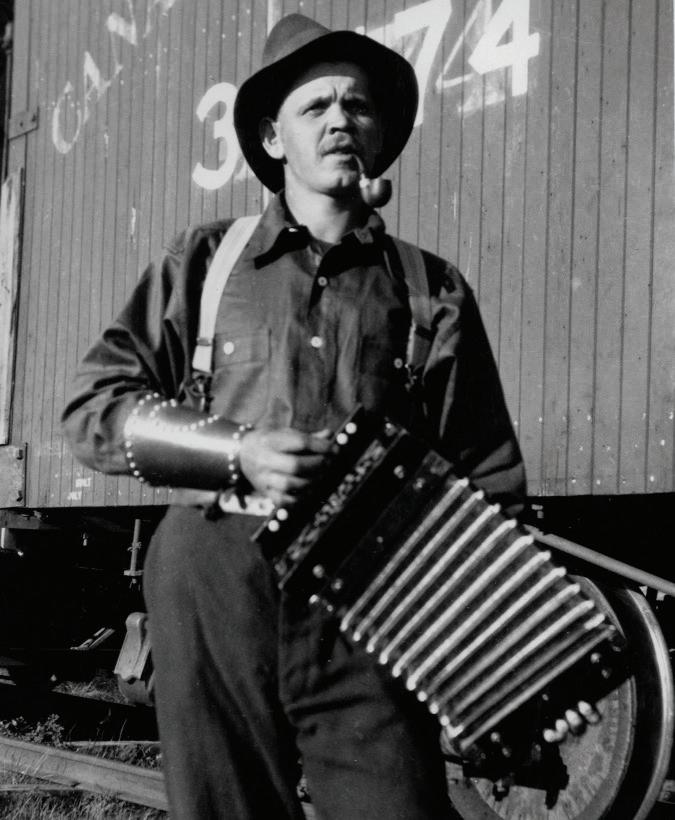
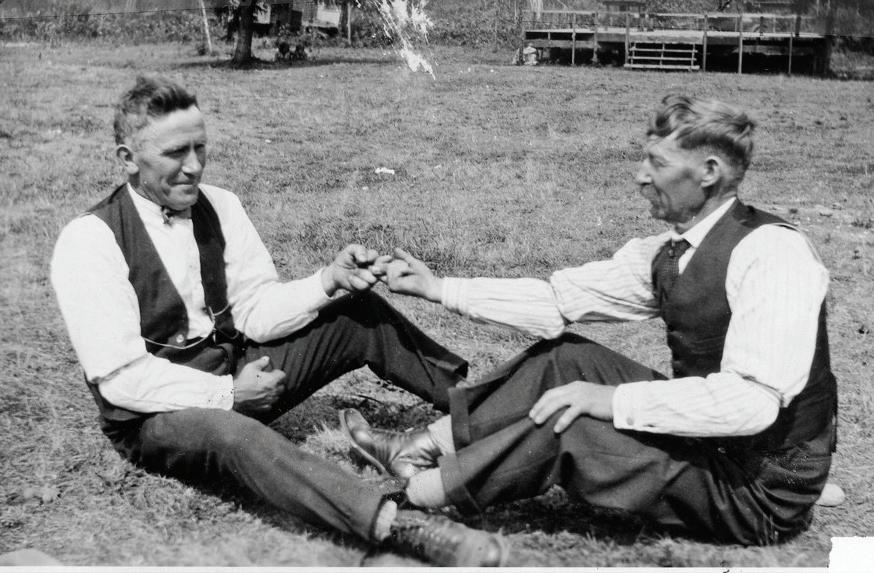
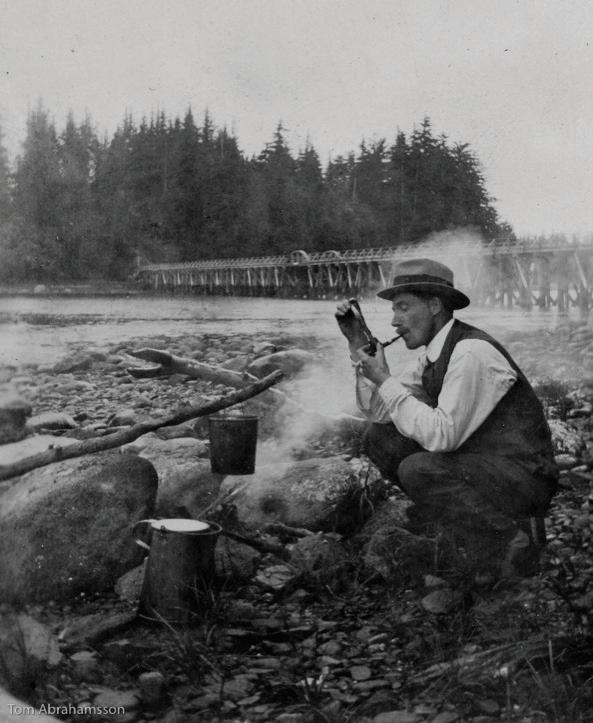

Carl Borg, Matsqui 1921. Carl Borg was born in Gränna. He immigrated with his parents and 9 siblings to Matsqui in 1912. They were 20 people travelling together. In Liverpool they asked to buy 20 tickets on the next boat out. There were no tickets left, so they had to wait for the next sailing. The name of the first ship they hoped to board was The Titanic.
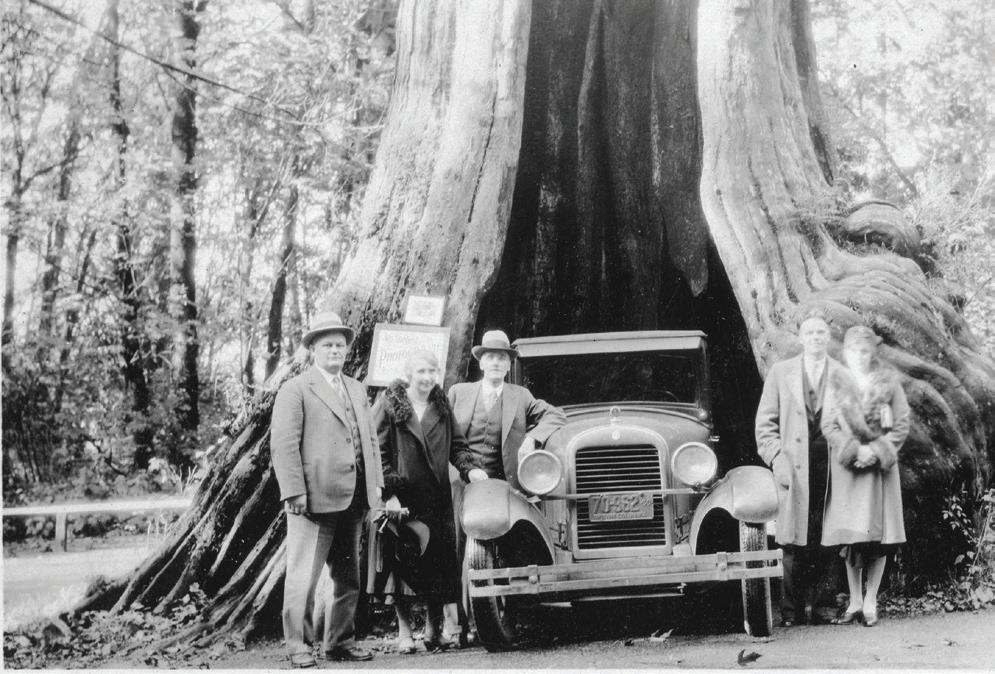
 Gentlemanly art of “Fingerkrok” 1930s. Swedish Park, North Vancouver. Helmer Staffanson came to BC in 1925. Olaf Malmquist immigrated in the early 1900s to BC. Both of these families settled in Silverhill.
Hulda Bennett (nee Linquist) in her $1500 mink coat, 1932. Hulda at the corner of 300 block, West Pender Street, Victory block, Vancouver.
Grouse Mountain Chair Lift, Vancouver, ca. 1950. Elof and Elsie Kellner. Elof was born in Stocka, Hälsingland and left Sweden in 1927.
Stanley Park, Hollow tree, 1930. From left to right: Eric Erickson, unknown lady, Solomon Bergman, unknown man, Ida Erickson Berglund. Solomon Bergman was born in 1868 in Tännäs, Härjedalen and left Sweden in 1913. He had a book and record store in the Hastings/Main area.
Gentlemanly art of “Fingerkrok” 1930s. Swedish Park, North Vancouver. Helmer Staffanson came to BC in 1925. Olaf Malmquist immigrated in the early 1900s to BC. Both of these families settled in Silverhill.
Hulda Bennett (nee Linquist) in her $1500 mink coat, 1932. Hulda at the corner of 300 block, West Pender Street, Victory block, Vancouver.
Grouse Mountain Chair Lift, Vancouver, ca. 1950. Elof and Elsie Kellner. Elof was born in Stocka, Hälsingland and left Sweden in 1927.
Stanley Park, Hollow tree, 1930. From left to right: Eric Erickson, unknown lady, Solomon Bergman, unknown man, Ida Erickson Berglund. Solomon Bergman was born in 1868 in Tännäs, Härjedalen and left Sweden in 1913. He had a book and record store in the Hastings/Main area.
Anne-Marie Eklund Löwinder har framröstats till Årets Svenska Kvinna 2023. Denna hedersbetygelse har sedan 1989 tilldelats svenska kvinnor som på ett utmärkande sätt representerar och lyfter fram Sverige av idag i världen.
Anne-Marie Eklund Löwinder är en av Sveriges ledande experter inom information och IT-säkerhet och är en betydande internationell IT-säkerhetsexpert. Genom sitt arbete inom IT och IT-säkerhet har hon satt Sverige på den internationella kartan och bidragit till ökad internetsäkerhet.

Under 12 års tid har Anne-Marie kunnat titulera sig som kryptoofficer. Som första svensk, och som enda kvinna i gruppen, är Anne-Marie en av endast 14 särskilt utvalda ”Trusted Community Representatives” i världen som med fysisk nyckel i metall har tillgång till internets hjärta i det toppsäkra datacentret i Culpeper, Virginia, USA.

– Att få gratulera Anne-Marie Eklund Löwinder till 2023 års mottagare av ÅSK-utmärkelsen är en stor ära för mig, säger Catarina Hansson, SWEA Internationals
SWEA Internationals stipendium för forskning i svenska språket, litteraturen och/eller kulturen 2023 tilldelas Svea Larson för hennes arbete med avhandlingen ”Feeling at Home: Materiality of Transnational Swedish Domesticity, ca. 1880-1940”. Hon tilldelas 15 000 USD för sin forskning.
Svea Larson är doktorand i skandinaviska studier vid University of Wisconsin – Madison. Avhandlingen undersöker de kulturella, materiella och emotionella världarna hos migrerande kvinnor under 1900-talets första del och deras roll som kulturbärare av och i
ordförande.
Att Ann-Marie dessutom rankas som en av Sveriges främsta experter på informationssäkerhet och vill inspirera fler kvinnor att satsa på en karriär inom IT gör henne till en mycket värdig ÅSKa!
Alla 6 000 SWEAmedlemmar kan både nominera och rösta fram Årets Svenska Kvinna. Utöver Anne-Marie gick tre andra fantastiska kvinnor vidare till slutomröstning: Jonna Jinton, fotograf och Youtuber, Azita Emami, rektor och forskare, samt Helena Samsioe, grundare av företaget Globhe. Till sist stod det klart att Anna-Marie knep de flesta rösterna.
– Jag är mycket stolt och hedrad över att bli utsedd till Årets Svenska Kvinna av SWEA International. Det är en stor ära för mig. Jag vill gärna vara en förebild för andra kvinnor, säger Anne-Marie.
vardagslivet.
SWEA Internationals podcast SWEA-podden ställer frågan ”hur är det egentligen att flytta hem till Sverige efter tiden utomlands?” Detta är också centralt i Svea Larsons forskning.
Sveas intresse för Sverige har sitt ursprung i hennes familjebakgrund med förfäder som emigrerade till USA och bosatte sig i Minnesota. Det svenska språket talades hemma av far- och morföräldrar under familjehögtider men inte i vardagssammanhang.
2015 flyttade Svea till Sverige som au pair för att förbättra svenskan och samtidigt forska om sin egen släkthistoria. Ur juryns motivering:
”Avhandlingen studerar svenska kvinnors migration till USA och återflyttande till Sverige och blir ett viktigt komplement till tidigare migrationsforskning som mest handlat om män. Projektet är tvärvetenskapligt och förenar teorier från etnologi, historia och gender-studier.”
SWEA är ett globalt nätverk för svenska och svensktalande kvinnor som bor – eller har bott – utomlands. Med cirka 6000 medlemmar i ett 70-tal avdelningar över hela världen är SWEA den största ideella Sverigefrämjande organisationen utanför Sverige. Varje år delar SWEA ut stipendier och donationer för mer än 2 miljoner kronor.
Sigrid Paskells stipendium inom scenkonsterna 2023 går till altviolinisten Ami-Louise Johnsson. Ami-Louise tilldelas 15 000 USD för sin sensationella begåvning.
13 års violinstudier vid Lilla Akademiens
Musikskola fortsatte AmiLouise vid 18 års ålder på Guildhall School of Music & Drama i London, där hon efter en tid bytte instrument och fann ”sin röst” i altviolinen/violan. Hösten 2023 inleder hon Masterutbildningen vid samma skola.
– Jag tycker att det är jättehärligt att min musik har nått ut till juryn. Det betyder jättemycket att violan, som är ett rätt ovanligt instrument för solospel, har lyckats få folk att känna någonting, säger Ami-Louise.
Juryn för Sigrid Paskell stipendium inom scenkonster-
Vid SWEA Internationals årsmöte utsågs doktoranden
Julia Sahlström till årets stipendiat för Agneta och Gunnar Nilssons Stipendium för studier av interkulturella relationer. Julia tilldelas 15 000 USD för sin forskning kring judars minnen och erfarenheter av Förintelsen.
Sahlström är doktorand i historia vid Stockholms universitet. Hon skriver på en avhandling om judars minnen och erfarenheter av Förintelsen under den tidiga efterkrigstiden, 1945-66. Stipendiet ska täcka kostnader för studier under en termin vid Oxford University dit hon blivit inbjuden att arbeta med Dr. Katherine Lebow, en expert inom området. Julia kommer under denna tid kunna lära känna andra forskare med liknande forskningsinriktning, ytterligare bygga sitt akademiska nätverk, samt ta del av de arkiv som finns där. Julia har sedan tidigare examina i retorik, statskunskap, samt i förintelse- och folkmordsstudier.
Det var en mycket förvånad men glad Julia Sahlström som nåddes av nyheten att hon blivit utsedd till Årets
na skriver i sin motivering:
”Ami-Louise visar en sensationell begåvning på ett solistiskt ovanligt instrument. Hennes musicerande är lyhört med enastående teknisk färdighet och en stark personlig uttrycksvilja. Juryn ser fram emot att följa AmiLouise Johnssons utveckling och bidrag till den svenska och internationella musikscenen.”
– Jag tycker att det är fantastiskt att Sigrid Paskells stipendium kan stötta altviolinisten Ami-Louise Johnsson i hennes fortsatta studier vid Guildhall School of Music & Drama i London, säger SWEA Internationals ordförande Catarina Hansson
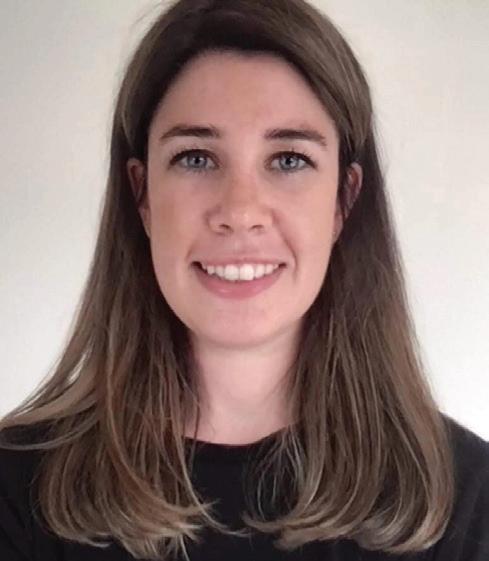

– Ami-Louise är en lysande begåvning som väcker känslor med sin musik och med sitt lite ovanliga instrument, viola. Hennes teknik är väl utvecklad och hon har ett mycket personligt och moget uttryck i sitt framförande. Jag är övertygad om att hon kommer bli mycket framgångsrik på såväl den nationella som den internationella musikscenen och ser fram emot att följa hennes karriär.
Sigrid Paskells Stipendium ges ut i scenkonsterna: sång, dans, teater och instrumentalmusik med en konstart i taget under en rullande fyraårsperiod. Stipendiet är till för unga lovande svenska kvinnor och män i början av sin karriär.
stipendiat:
– Wow, stort innerligt tack! Jag kan inte nog tala om hur glad jag är över att jag har fått det här stipendiet!
Ur juryns motivering: ”Forskning kring förintelsen är ständigt aktuellt mot bakgrund av vad som sker runt om i världen, och Julia har redan använt sina kunskaper och sitt intresse vid frivillighetsarbete inom integrering och att sprida kunskap om folkmord, konflikter och rasism. Vi är övertygade att Julia kommer att fortsätta att bygga broar mellan människor genom sin fortsatta forskning.”
– Oerhört positivt att vi har en värdig mottagare av det Interkulturella stipendiet och dessutom med ett alltid lika viktigt och dessutom aktuellt ämne, säger SWEA Catarina Hansson, SWEA Internationals ordförande.
Summary in English: SWEA is the largest non-profit organization promoting Sweden outside of Sweden. Every year, SWEA distributes more than 2 million SEK in scholarships and donations. Meet this year’s scholarship winners Svea Larsson, Ami-Louise Johnsson, and Julia Sahlström, as well as Internet expert Anne-Marie Eklund Löwinder, voted Swedish Woman of the Year.
(Christmas show) where each boarding house and the school’s day students get 10 minutes to joke, sing, dance, rap, and entertain in their own creative way on stage.
David Nikolov
Age: 19
Class: DP23 (IB Programme)
From: Bulgaria/Austria
Originally from Bulgaria, David has lived in Austria and Australia. Despite having no connection to Sweden whatsoever, David and his family moved here in October 2021 so that David and his younger sister could enroll at SSHL.
“I chose SSHL because it is known as an ambitious and well-respected school and because it offers the International Baccalaureate programme in English. The school campus is superb - a pleasure to be at every day. There are various places to study, relax, workout, walk, talk, etc. Its location right by Sigtuna’s center is another huge advantage, as one always has the opportunity to walk there for anything one needs.”
David particularly enjoys the school’s music facilities as he is able to practice piano in-between classes . This is particularly helpful as he plans to study musical composition in the Netherlands after graduation.
David’s main highlights of his time at SSHL include the intramural league Hemserien: “the games involve many different disciplines and are very entertaining to watch. Hemserien builds school spirit like no other event at SSHL.”
He also underscores the amazing performances, skits, and events organized by SSHL’s school groups or boarding students. Notable examples include the annual Julspex
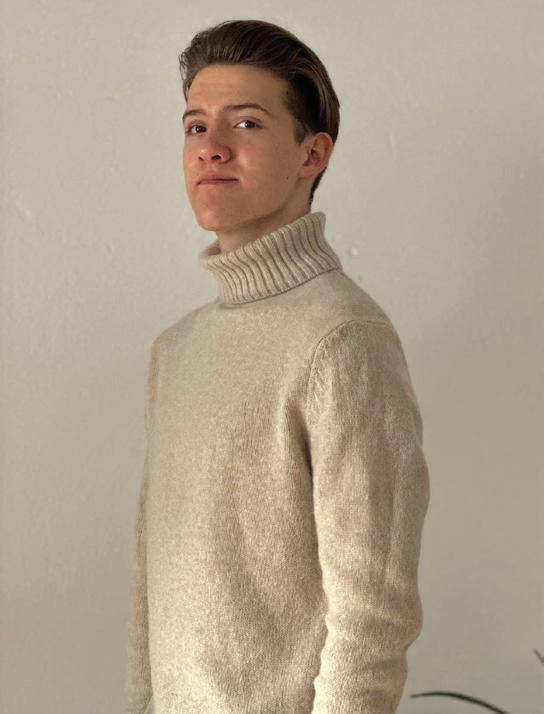
Nearing graduation, David reflects: “Something I will miss about SSHL is its beautiful campus, creative community and ability to organize original, grand-scale events. The school always involves all students in activities, whilst keeping many traditions and cultural essentials alive. It shows great commitment, respect and effort towards its international community, and I am proud to be a student attending SSHL.”
Carolina Wåhlin
Age: 14
Class: MYP4
(IB Programme)
From: Switzerland/Sweden
Carolinawanted to attend SSHL to follow in the footsteps of her two older sisters, one who graduated, and one who still attends SSHL and lives in the same boarding house. While Carolina is Swedish, she had never lived in Sweden until she enrolled at SSHL. From the very start, she was excited both about the prospect of living in Sweden and of attending boarding school. The contrast between her school in Switzerland and SSHL is stark, with the “overall system and experience being very different”. Carolina says the environment at SSHL is refreshing and that people are more down to earth here, despite many students coming from privileged backgrounds.
Although she has only completed half a school year so
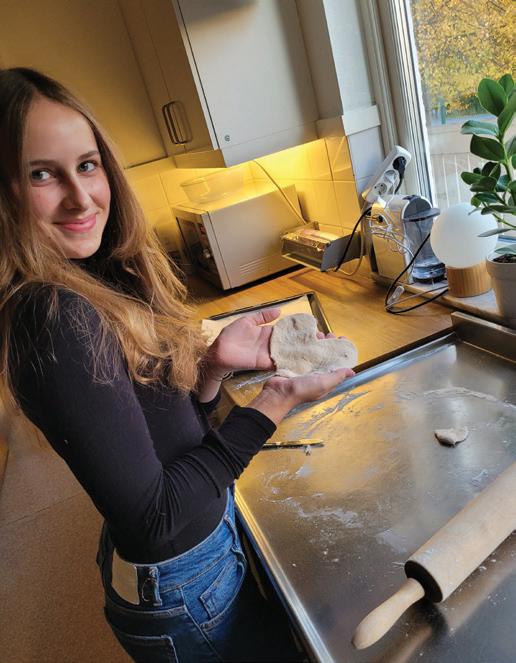
far, living at SSHL has allowed Carolina to improve her Swedish, make new, international friends, and take part in Swedish traditions, such as Lucia. SSHL’s Lucia celebration is renowned and people from all across Sweden and other parts of the world come to experience it. Carolina was able to gain a spot in the choir in her first year and had the opportunity to participate in the magical December spectacle.
In her spare time, Anja likes to spend time with friends, and focus on her studies, facilitated by the fact that “you never really leave school, or Sigtuna anyway”. She adds that there are also many leisure activities to choose from.
“There is rarely a quiet moment,” she concludes.
Anja BerglöfAge: 18
Class: EK23 (Economics)
From: USA/Sweden
Anja was born in Manhattan, New York, but grew up in Dalarna after her Swedish mother wanted to trade the big city buzz for a more peaceful environment.
A little wary about attending boarding school, Anja was persuaded by her family to give it a try.
“My younger sister doesn’t go to SSHL, but both my mother and her siblings attended and had positive experiences here,” says Anja.
Now, three years later, some of Anja’s best memories are associated with her time at boarding school. “You become very close friends when you live together and even the small, everyday fun things you do create cherished memories,” she says.
While life isn’t always sunshine, Anja feels that the great moments far outweigh the more challenging ones, and that living away from home has taught her to be more independent and social.
Anja represents her boarding house as part of Haga’s hemråd (home council), and is responsible for promoting a positive atmosphere and organizing free-time activities. Additionally, she takes part in a school organization called Hjärter Ess that dedicates itself to enhancing school spirit including organizing fun activities like this year’s matchmaking questionnaire leading up to Valentine’s Day.
Bin Adnan
Age: 18
Class: DP23 (IB Programme)
From: Saudi Arabia/Norway
Saadlived in Norway for the first ten years of his life, before moving to Saudi Arabia where he attended an American school.
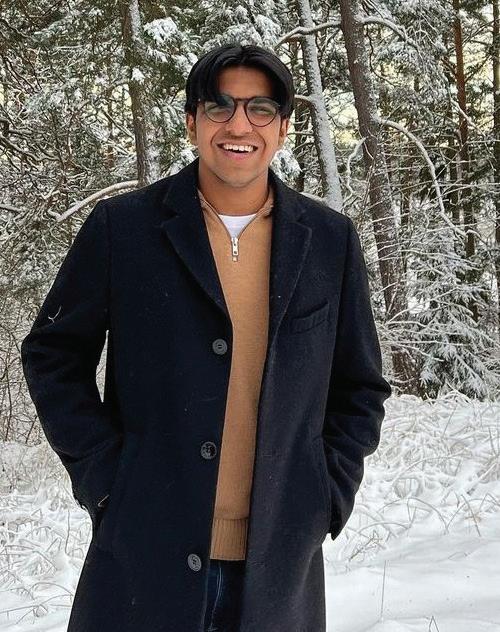
“Both the teachers and 30 percent of the students were American, so it felt more like being in the United States than in Saudi Arabia,” he says. However, Saad had always wanted to go to boarding school and since the US was closed at the time due to Covid, SSHL became an enticing option. After SSHL’s team flew out to Saudi Arabia to promote the school, Saad’s older brother enrolled and Saad soon followed.
Saad says both his American school in Saudi Arabia and SSHL are very international, and although they provide their own unique cultural experiences, they both have diverse student populations.
”The diversity at SSHL allows it to have a piece of everywhere that make up the school’s whole,” says Saad. “My time at SSHL has helped me develop positively as a person and allowed my multicultural mindset to flourish. I’m really glad I picked boarding here!”
Now, after almost three years at SSHL, Saad states that naming “one favorite memory is just not enough”, listing, among others, “staying up and talking with my roommate”, “going on adventures in Stockholm on the weekends”, and “getting to try and compete in new sports like boxing” as the highlights of his experience. The overall great experience, he says, is the highlight itself.
 “Saad” Muhammad Saad
“Saad” Muhammad Saad
CHICAGO
Swedish American Museum
5211 N. Clark St., Chicago, IL 60640
Tel: 773-728 8111 | info@samac.org
www.swedishamericanmuseum.org
Ongoing through Aug 13 – Letters From Home – a collaborative contemporary art exhibit that brings together artists in Sweden and Chicago.
DETROIT
Swedish Club of Southeast Michigan
22398 Ruth St, Farmington Hills, MI 48336 Tel: 248-478-2563 | www.swedishclub.net
We have monthly meetings and meals at 1:00 on Sundays, unless the Sunday falls on a holiday weekend and then we gather on the second Sunday of the month. For those of you who are interested in "brushing-up" on your Swedish language skills, language classes are provided at the Club.
Jun 24 – Sat 11am: Midsommarfirande
MINNEAPOLIS
American Swedish Institute
2600 Park Ave. Minneapolis, MN 55407 Tel: 612-871 4907 | www.asimn.org
Jun 4 – Sun 10am-12pm: Gardening på
svenska
Jun 8, 22 – Thur 6-7pm: Discover the Golden Mile: Neighborhood Walking Tour
Jun 10 – Sun 10am-3pm: Nordic Herbals for Summer. Register on the website.
Jun 14-Oct 29 – Leaving Your Mark: Stories in Wood.
Jun 17 – Midsommar celebration. Registration opens March 24 (ASI members) and March 27 (general public)
American Swedish Historical Museum
1900 Pattison Avenue, Philadelphia, PA 19145 | Tel: 215-389 1776 | info@americanswedish.org | www.americanswedish.org
Mar 30 - Sep 24 – Radically Marimekko
Jun 4 – Sun 12-4pm: Scandinavian Celebration Day! RSVP on the website.
Jun 20 – Tue 10:30 am: Toddler Time: Celebrate Sweden. Register on website.
Jun 24 – Sat 4-7pm: Midsommarfest.
Tickets: $5. Please register on website.
Jul 6 – Thur 6-7:30pm: Summer Concert with Sofia Talvik
PORTLAND
Nordic Northwest Nordia House, 8800 SW Oleson Rd., Portland, OR 97223 | Tel: 503-977 0275 www.nordicnorthwest.org
All events please register on website. Ongoing through Jul 1 – Tattoo: Identity Through Ink
Jun 2, Jul 7, Aug 4, Sep 15 – Film
Screening. See website for more info.
Jun 10 – Sat 6pm: Miolina – Violin Duo Jun 23 & 24 – Oregon Midsummer Festival. Buy tickets here:
https://www.oregonmidsummer.com
Jul 8-Nov 5 – Threads – Interwined in Iceland: Textiles and Book Arts
SEATTLE
Swedish Cultural Center
1920 Dexter Ave. N. Seattle, WA 98109 Tel: 206-283 1090 | www.swedishclubnw.org info@swedishculturalcenter.org
Every week – Swedish Language Classes. Beginners, Intermediate, Advanced, Expert Conversational Swedish, and Cultural Classes in English. Call to register. Most classes are $114 for Club members, $144 for non-members. Available via Zoom and in-person.
Tuesdays – Weaving Classes. Visit the website for more info.
Wednesdays – 5pm: Lilla fredag (Little Friday)
Fridays – 6pm: Swedish Happy Hour
National Nordic Museum
2655 NW Market Street, Seattle, WA 98107 Tel: 206-789 5707 | nordic@nordicmuseum.org www.nordicmuseum.org.
Various events – in-person or online. Please visit our website for updates. Buy tickets or register online.
Ongoing through Jul 30 – Jónsi – an immersive artwork created by Jónsi
Jul 10-14 – Half Day Summer Camp: Art Adventures
Jul 24-28 – Half Day Summer Camp: How to be a Viking.
WASHINGTON, DC Embassy of Sweden
2900 K Street, N.W. Washington, DC 20007 Tel: 202-467 2600 | www.swedenabroad.com ambassaden.washington@gov.se
Swedish events outside Sweden
Visiting and telephone hours: Mon-Fri 9am4pm (closed for lunch 12-1pm)
OTTAWA
Embassy of Sweden
377 Dalhousie Street, Suite 305, Ottawa ON K1N 9NB Tel: 613-244 8200
www.swedenabroad.se/en/embassies/ canada-ottawa/
General inquiries: ambassaden.ottawa@gov.se
Work and Residence Permit Inquiries: sweden.ottawa.permits@gov.se
Visiting hours: Mon-Fri 9am-12 noon. Phone hours are: Mon-Fri 10am-12 noon
TORONTO
Swedish Lutheran Church
25 Old York Mills Rd, North York, ON M2P 1B5 toronto@svenskakyrkan.se
Tel: 416 486-0466
Please visit www.svenskakyrkan.se/toronto
Mobil präst i Nordamerika: Maria Scharffenberg; e-mail: maria.scharffenberg@svenskakyrkan.se
VANCOUVER
Scandinavian Community Centre
6540 Thomas Street, Burnaby, BC V5B 4P9
Tel: 604-294 2777 | info@scancentre.org
www.scancentre.org
Please visit our website for more info and to see our events.
Jun 24 & 25 – Scandinavian Midsummer Festival. More Info: www.scandinavianmidsummerfestival.org
WINNIPEG
Swedish Cultural Assoc of Manitoba
Scandinavian Cultural Centre
764 Erin St, Winnipeg, Manitoba R3G 2W4
Tel: 204-774 8047
www.scandinaviancentre.ca
Event registration by email at: svenskclub17@gmail.com
Jun 10 – Sat 10am-3pm Swedes on Wheels head for Erickson! There will be history, food, music and dancing! See our website for more information.
Aug 31 – Crayfish party in Fraser Grove Park.

Lindstrom, 604-537-0557
www.swedishculturalsociety.com
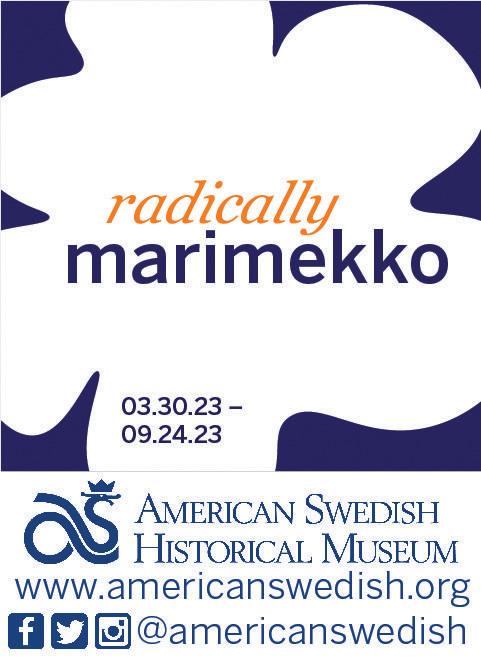

Email: swedishculturalsociety.ca @gmail.com
Swedish Canadian Village Beautiful Assisted Living Residence & Senior Subsidized Apartment Buildings Located in Burnaby, BC. Tel: 604-420 1124; www.swedishcanadian.ca.
Email: info@swedishcanadian.ca
Swedish Heritage in BC 1812
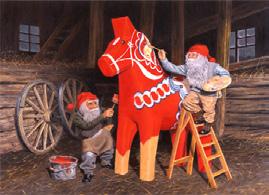
Duthie Ave. Burnaby BC. Laila Axen Tel: 604-526 7464. Visit us at www.swedishheritageinbc.org.
Scandinavian Business Club
Monthly meetings feature business speakers. Guests and new members welcome. Call SBC: 604-484-8238. Visit us at www.sbcbc.ca
Scandinavian Community Centre
Scandinavian Community Centre Beautiful setting for weddings, parties, birthdays, meetings and seminars. 6540 Thomas Street, Burnaby, BC info@scancentre.org
Tel: 604-294-2777 www.scancentre.org

Svenska Kulturföreningen

Ordförande Niklas Z Kviselius 604-218-7528. Kassör är Christel

E-mail: swedishheritagebc@gmail.com

Nordic Museum has moved to a beautiful, brand-new building! In Seattle, 2655 N.W. Market St., Ballard; 206-789 5707.
Swedish Club
1920 Dexter Ave. N, Seattle, WA 98109; Tel: 206-283 1090. Open Wednesday evenings for supper and games, Friday for lunch and dinner. Pancake breakfasts on first Sundays of the month. Rental venue for meeting, parties, etc. www.swedishclubnw.org
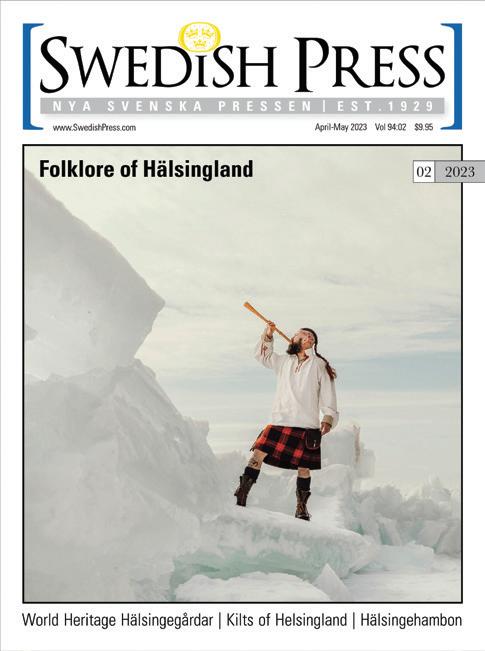
Församlingens historia är lång och brokig, men under hela 70 år har kyrkan funnits där som en trygghet för svenskar och svensktalande i Toronto, i hela Kanada och nu även i Nordamerika.
Redan under 1930-talet startade en inofficiell svensk församling i Toronto. Församlingen träffades för gudstjänster på svenska i en lokal på Queens St West. Utöver att vara kyrka för svenskar firande man även svenska högtider. Kyrkan kom att bli en viktig mötesplats för svenskar, speciellt under den immigrationsvåg som ägde rum under 1950-talet. Den 19 april 1953 upptogs kyrkan som en etnisk församling inom Evangelical Lutheran Church in Canada (ELCIC). Mellan 1953 och 1991, hade församlingen bara två olika herdar. August Raidur som stannade i 22 år och Tönis Nömmik som var kvar i 16 år.
I slutet av 70-talet flyttade församlingen till Danska kyrkans lokaler i Willowdale. Församlingen växte och år 1990 blev den upptagen bland SKUT:s (svenska kyrkan i utlandets) kyrkor. SKUT började då bidra med en avlönad kyrkoherdetjänst. Nu följde en blomstringstid för församlingen. Aktivitetsnivån ökade markant. Gudstjänster kunde hållas varje vecka och under denna tid blommade barnoch ungdomsverksamheten upp.
1997 flyttade församlingen till Agricola Finnish Lutheran Church, och kort därefter beslutade SKUT att dra in kyrkoherdetjänsten och sitt ekonomiska stöd till församlingen. Svenskarna ökade dock i antal i Torontoområdet, så det var aldrig tal om att lägga ner verksamheten. Med hjälp av
biskop Michael Pryse i Kitchener och en utsänd präst kunde gudstjänsterna, med större lekmannainflytande, fortfarande hållas på svenska. Kyrkorådet satsade på att försöka locka pensionerade emerituspräster från Sverige till Toronto. 2005 tillträdde Anna Runesson och hon stannade i församlingen i åtta år. Därefter följde en lång rad präster som alla stannade en kortare tid.
I mars 2020 utbröt COVID-19 pandemin. Medan verksamheten i kyrkan låg nere, kontaktades kyrkorådet av SKUT med en förfrågan om det skulle vara möjligt att stationera en svensk präst i Toronto med ansvar för den mobila verksamheten i Nordamerika och som samtidigt kunde fungera som kyrkoherde för Torontoförsamlingen. Detta mottogs med stor entusiasm av kyrkorådet och i mars 2021 anlände Maria Thorsson. Hon stannade till februari 2023 då nuvarande pastor Maria Scharffenberg anlände.
– När jag läser om församlingens historia är det framför allt två saker som slår mig. Först och främst det
enorma engagemanget och hängivenheten som församlingen visar. För det andra antalet kyrkoherdar som kommit och gått. Men genom allt detta har församlingen stått stadigt och fortsatt att verka. De har gång på gång bevisat att de är inte de anställda, utan de engagerade församlingsborna, de som ger av sin tid, kraft och engagemang, som är och som också bär församlingen, säger hon.
Maria Scharffenberg och församlingen ser nu framtiden an med tillförsikt och glädje.
– I 70 år har Svenska kyrkan här i Toronto på olika sätt varit en ledare. Ni har lett varandra. Ibland har ni haft en präst eller kyrkoherde här, som haft den formella rollen som ledare. Men i slutändan är det ni som är och bär församlingen. I slutändan är det ni som leder varandra. Fortsätt att leda varandra på goda vägar, avslutade hon sin predikan på 70-års-jubileet den 23 april.
Summary in English: The Swedish Lutheran Church of Toronto celebrates its 70th anniversary. Thanks to its dedicated congregation, the church remains a place of comfort and community.
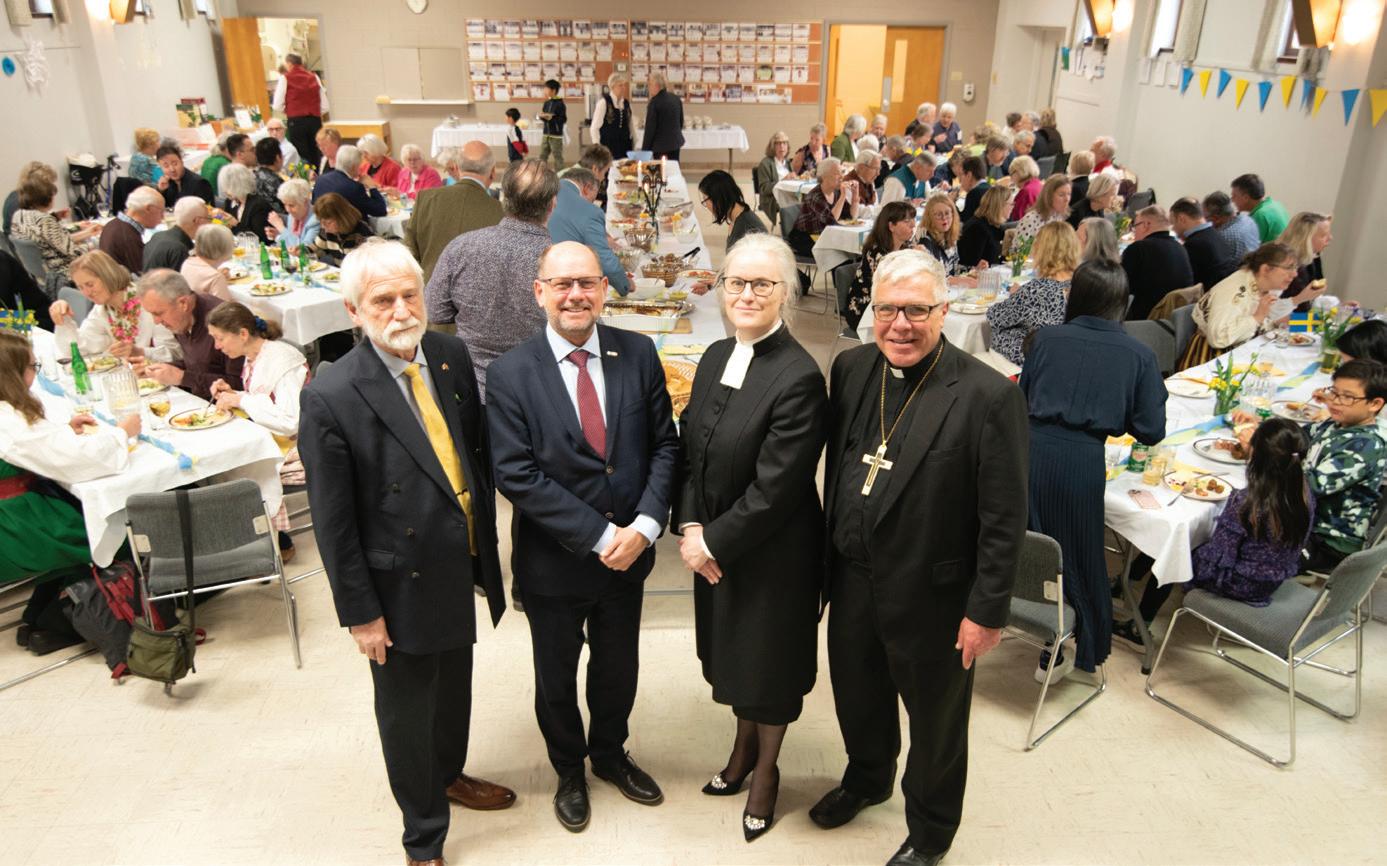

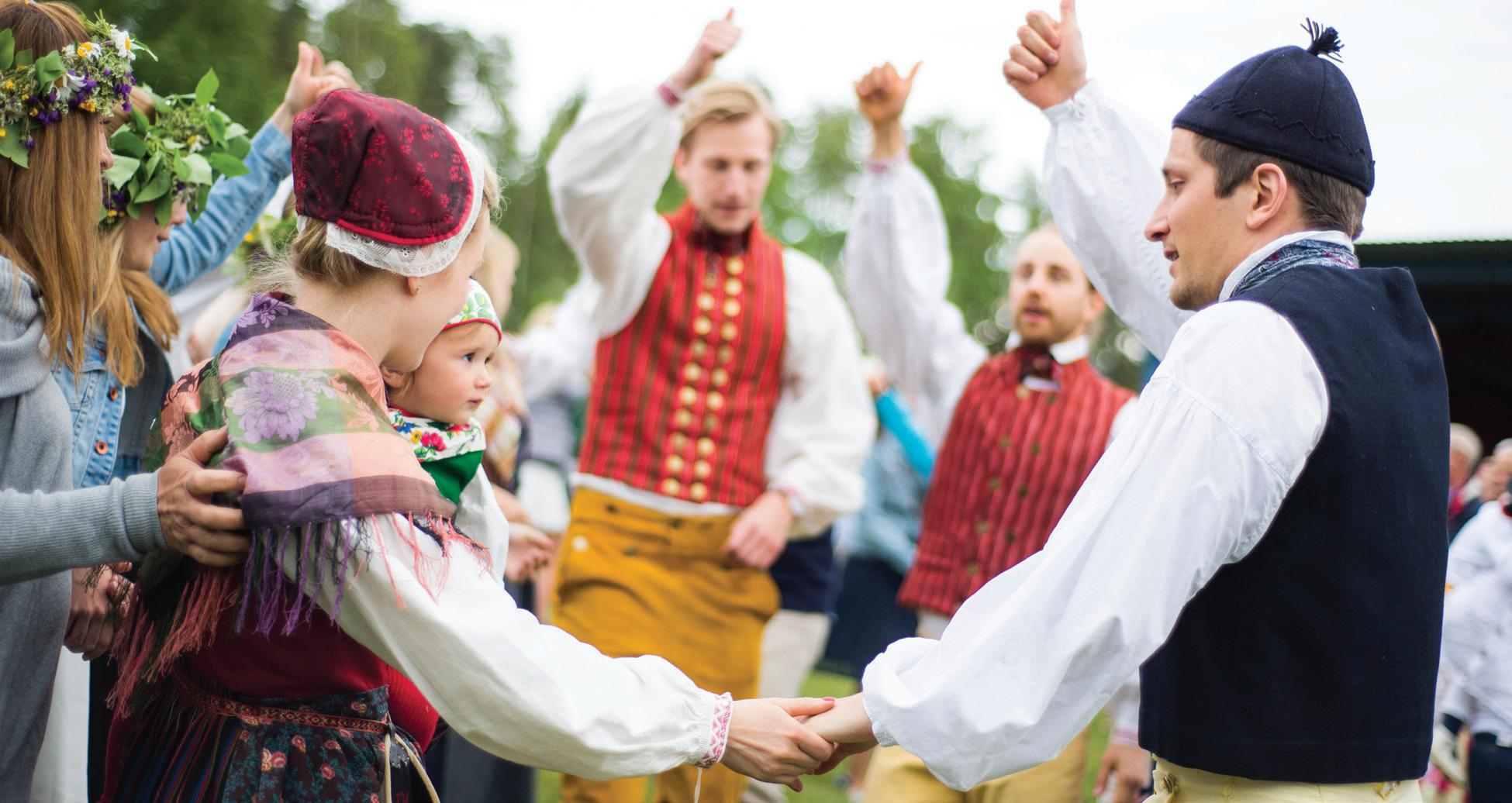



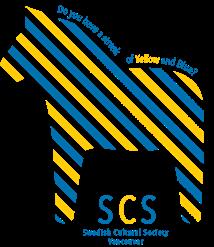

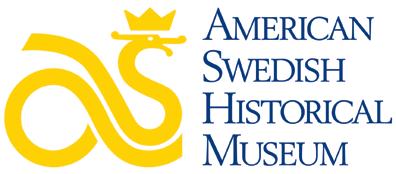
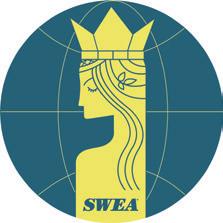

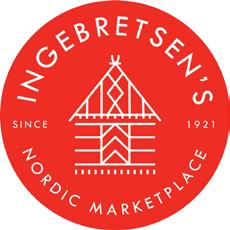
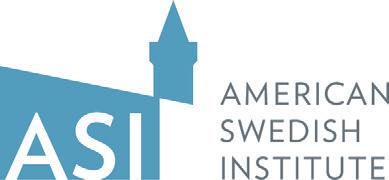


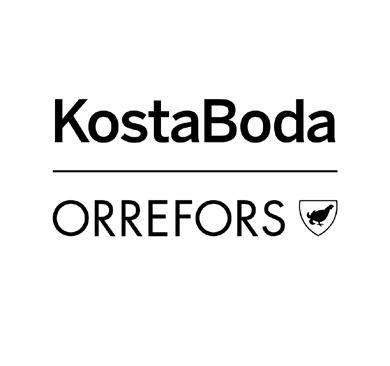



Swedish curriculum High School programmes
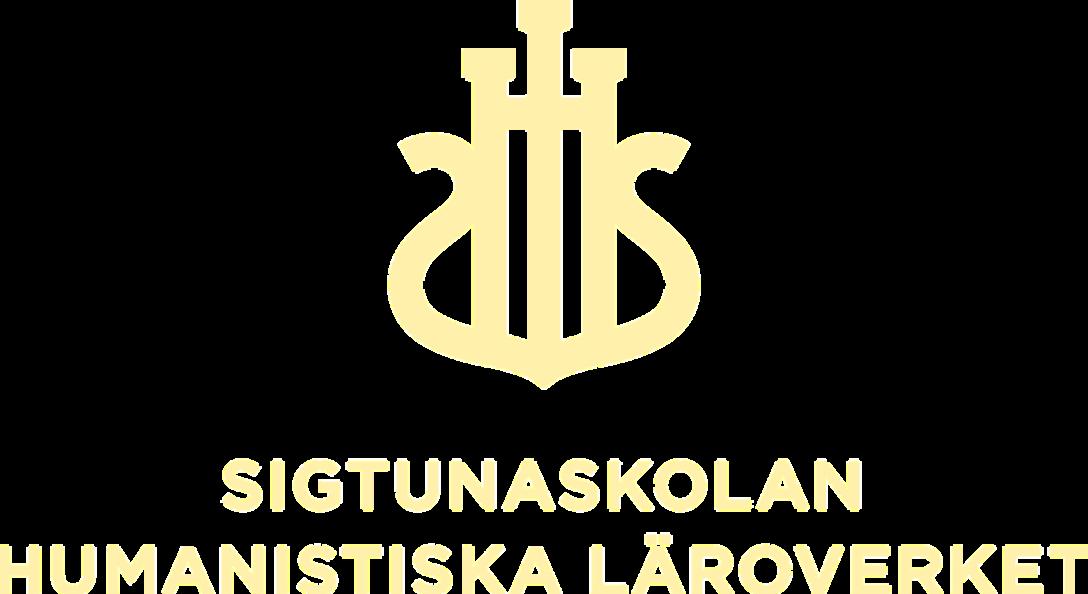





IB Diploma Programme and IB Career-related Programme

Business Management programme as bilingual Swedish/English
SSHL is a Swedish boarding school with an international outlook We offer our students a unique blend of Swedish and international culture, academic excellence and first-rate student support SSHL challenges and inspires students from over 45 countries. Our alternatives for boarding are:
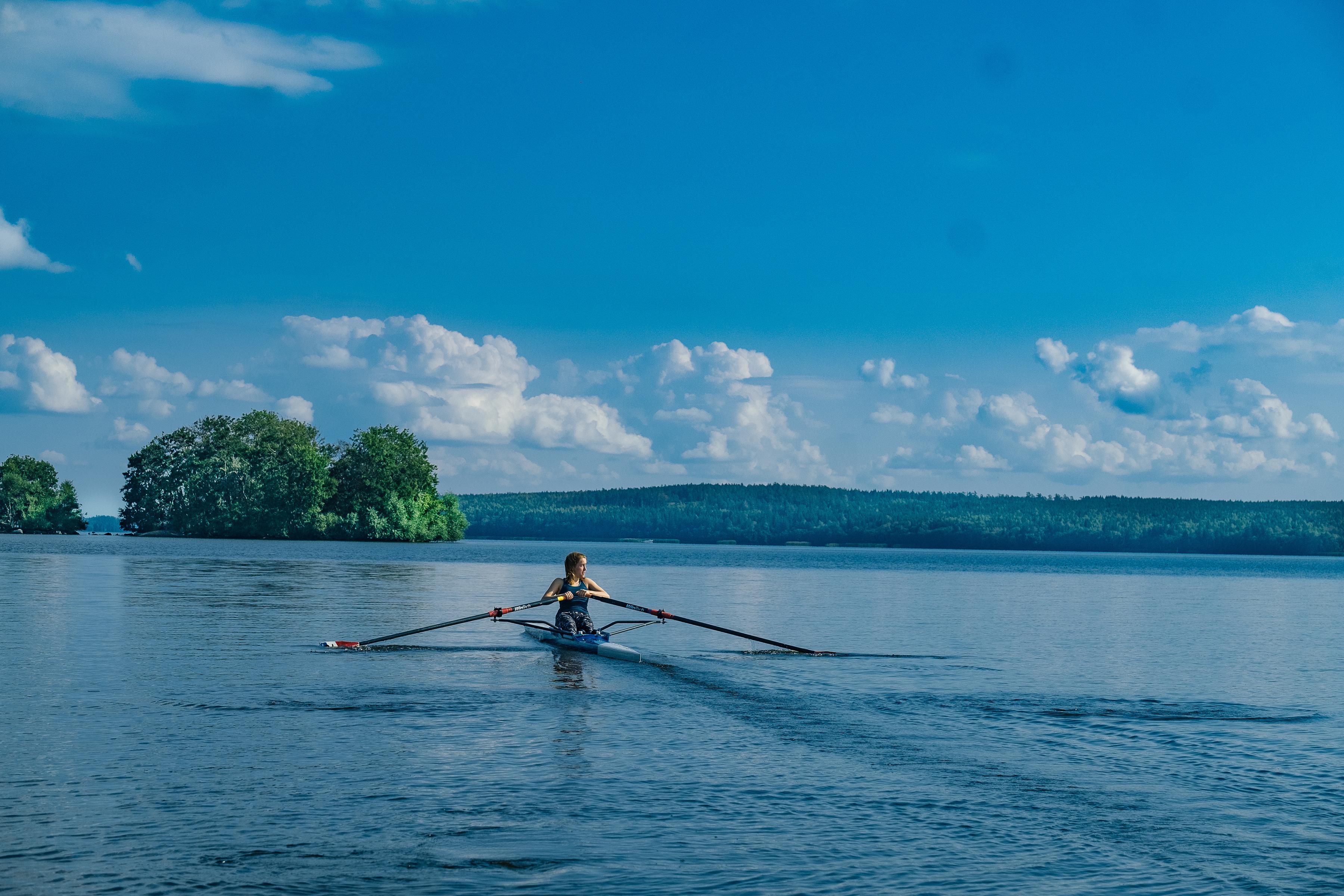
Full Time Boarding - for students who can ' t easily return to their families on weekends
Traditional Boarding - travel home some weekends
Weekly Boarding - travel home every weekend
NEW!
IB PCareer-related rogramme
At SSHL, we specialise in providing high quality education to students from around the world We believe that committed teachers, a focus on the individual and a supportive learning environment all contribute to academic achievement. The school is located near Arlanda Airport, in a serene environment with abundant opportunities for recreational activities. Come visit, try boarding, or book a virtual tour Welcome!
sshl.se/visit
sshl.se/try-boarding